Druze: the
great survivors
How the world's most secretive faith
has endured for a thousand years
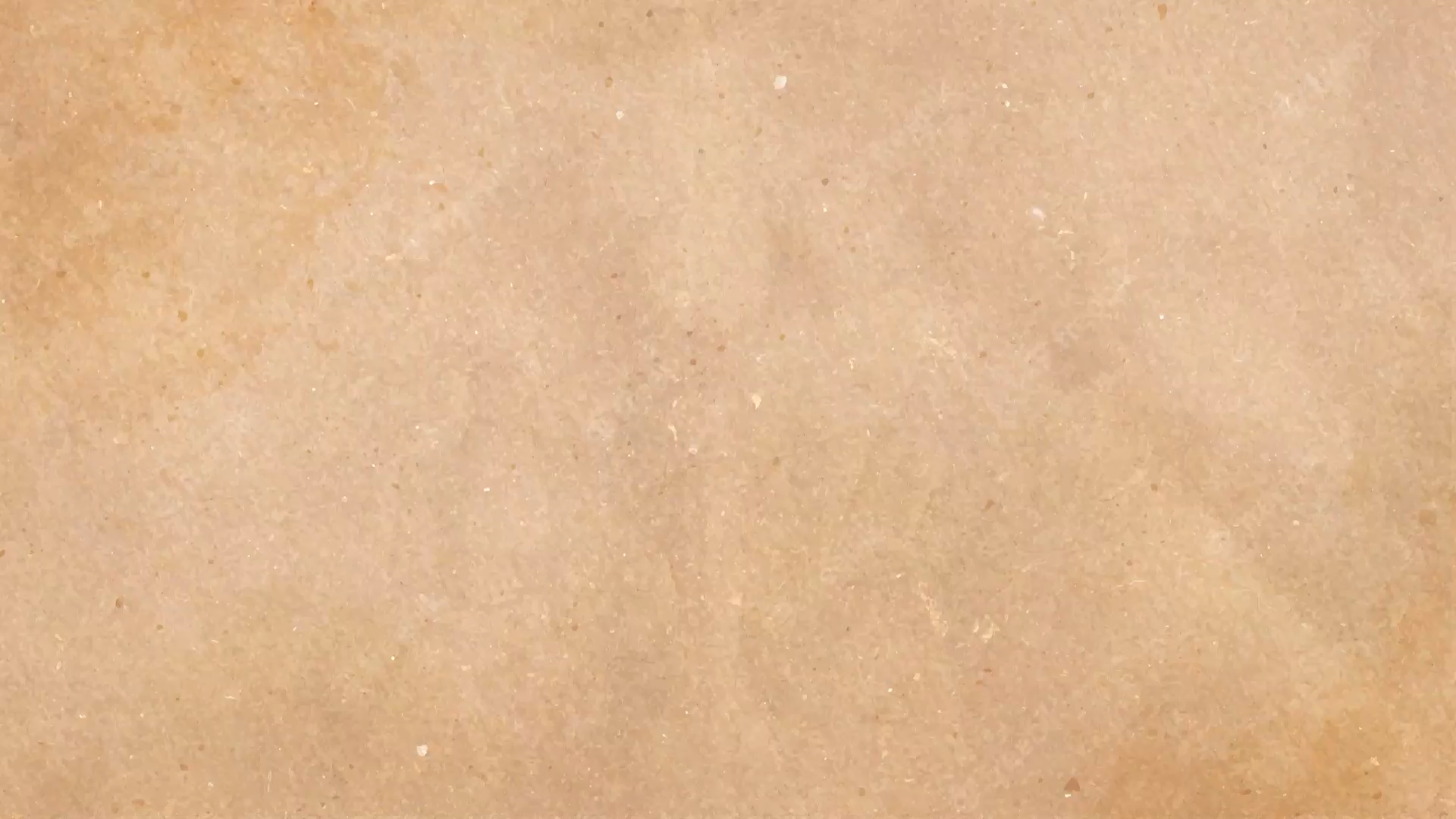
To many, the Druze are an enigma, Arabic-speaking followers of an esoteric Abrahamic faith rooted in Islam, but which branched out on a different spiritual path in the 11th century.
To the Druze, both of these characterizations are misperceptions.
With a fierce generational attachment to the lands on which they have lived for centuries, the Druze are culturally an Arab Middle Eastern community. As a result of the laying down of the modern borders of the Middle East in the early 20th century, the Druze can be found today chiefly in Syria and Lebanon, Palestine, Israel, and Jordan.
There are an estimated 1.5 million or more Druze in the world today. While they live mainly in the Middle East, in response to economic and political pressures, including conflicts and persecution, over the decades Druze communities have also sprung up in other countries around the world.
But wherever they are found, the Druze form tight-knit communities, closed to outsiders – since 1043, converts have not been permitted. Indeed, even the non-initiates (the juhhal) among the Druze themselves either have no access, or choose not to have access, to their faith’s religious texts. Nor are they bound to the duties of the initiates (the uqqal).
Only rarely will a Druze marry an outsider. But for many young Druze committed to marrying within their faith – especially those living in dwindling overseas communities – finding partners is becoming a growing problem that bodes ill for the long-term future of the people.
Today, as throughout their history, the Druze remain wreathed in mystery. However, given all the myths and misconceptions that surround them, the true mystery is how this small sect has not only managed to co-exist peacefully in the troubled ethnic and sectarian mosaic of the Middle East, but has also remained a consistently relevant player in the politics and cultural landscape of the region.
Birth of a faith

Writing in 1928, the English American Semitic scholar and Zionist, Richard Gottheil, said: “For some 900 years, a strange national-religious body has lived in Syria.
“All sorts of theories have been advanced by scholars to account for their peculiar tenets and customs. All sorts of means have been tried by their overlords to put them down.
“The scholars have been as unsuccessful as have been the overlords, and the Druze still remain the great mystery of the Lebanon mountains.”
For Eyad Abu Shakra, author, managing editor of the pan-Arab daily newspaper Asharq Al-Awsat, and a specialist on the anthropology, geography, and history of the Druze, the best introduction to the identity and culture of the Druze, and the foundation of their faith under the Ismaili Shiite Fatimid caliphate in the 11th century, is to be found in the work of Dr. Najla Abu-Izzeddin, a leading Druze scholar.
In her seminal 1984 book, “The Druzes: A New Study of their History, Faith, and Society,” she recounts how the Druze community was formed in the 11th century “in response to a religious call (da’wa) propagated from Cairo in the reign of the sixth Fatimid caliph, Al-Hakim Bi-Amr Allah.”
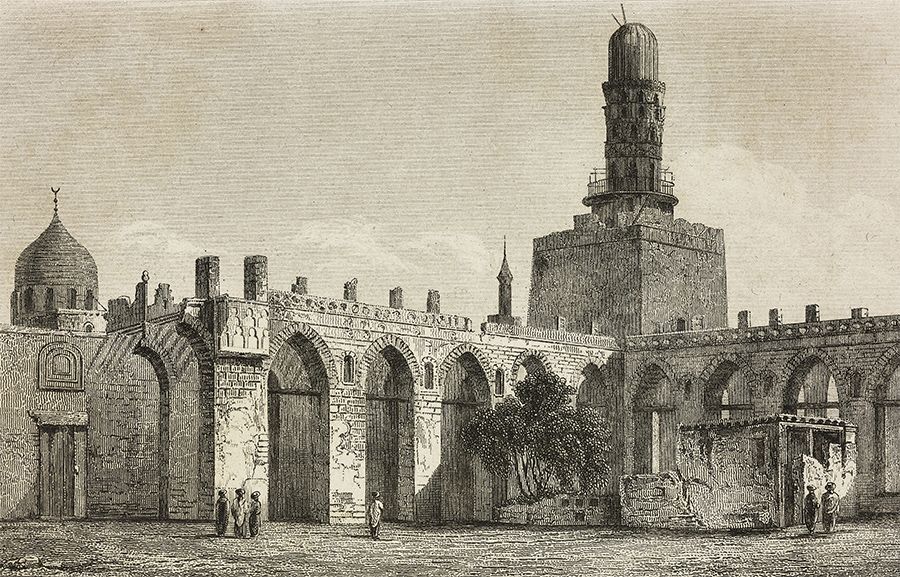
Early 19th-century engraving of Al-Hakim Mosque in Cairo, completed in 1013, during the reign of Al-Hakim Bi-Amr Allah, the sixth Fatimid caliph. (Getty)
Early 19th-century engraving of Al-Hakim Mosque in Cairo, completed in 1013, during the reign of Al-Hakim Bi-Amr Allah, the sixth Fatimid caliph. (Getty)
The call went out in the year 1017, “and aimed at universal proselytization. Missionaries were sent far and wide, and proselytes joined in large numbers.”
But the new faith would not be open to outsiders for long. Following the mysterious disappearance of one of the key historical figures in the story of the Druze, and faced with existential persecution, the elders of the faith ordered a complete halt to proselytization in 1043.
“Since then, the Druze have been an inbred community,” Abu-Izzeddin wrote.
It was the sudden dramatic reversal of fortunes in the 11th century that drove the Druze from Egypt and scattered them across the region, where they settled in the homelands that remain their strongholds to this day, “in mountain regions not easily accessible to outsiders.
“South Lebanon and Wadi Al-Taym at the foot of Mount Hermon are the principal concentrations, and the oldest, the Druze having lived there since the first years of the da’wa.”
Today, more than half the total Druze population lives in Jabal Al-Druze, south of Damascus. Small groups can also be found in villages in Jabal Al-Summaq, and the neighborhood of Aleppo, part of Damascus, and in Palestine in the region of Safad and on the slopes of Mount Carmel.
All trace their lineage to the community of the Druze founded during the reign of Al-Hakim Bi-Amr Allah, who in 996 became the sixth caliph of the Fatimid dynasty, which emerged in Tunisia in 909. By 969 the Fatimids had conquered Egypt, founded Cairo (Al-Qahirah, meaning the conqueror) as their new capital and wrested control of Jerusalem from the Baghdad-based Abbasids.
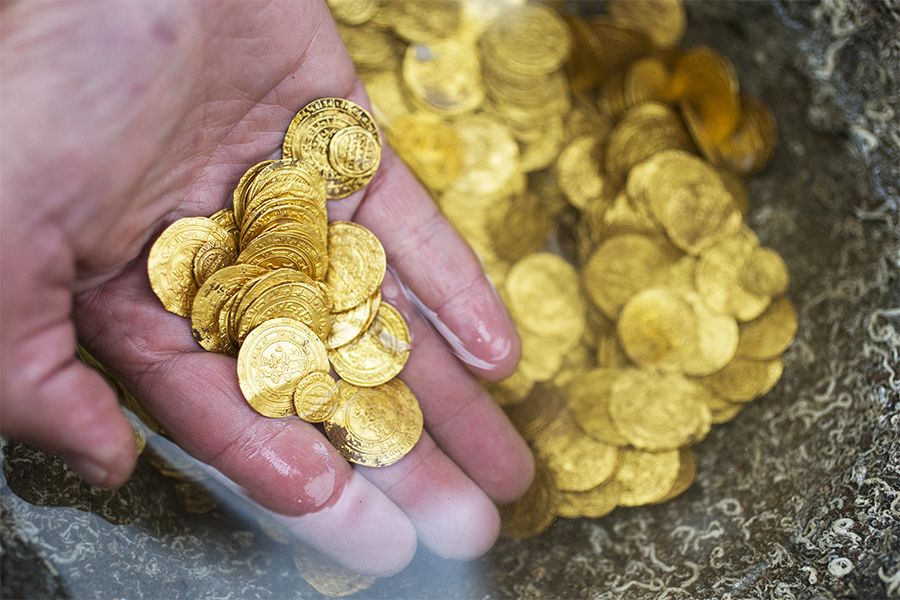
In 2015, 2,000 gold coins minted in the 10th and 11th centuries by the Fatimid caliphs Al-Hakim and his son and successor Al-Zahir were discovered on the seabed off the Israeli town of Caesarea. (AFP)
In 2015, 2,000 gold coins minted in the 10th and 11th centuries by the Fatimid caliphs Al-Hakim and his son and successor Al-Zahir were discovered on the seabed off the Israeli town of Caesarea. (AFP)
At its height, the territory controlled by the Fatimid caliphate extended clear across the crown of Africa, from Tunisia in the west to Egypt and beyond in the east, down both shores of the Red Sea, as far south in Arabia as Madinah and Makkah, and north into Palestine, Syria, and Lebanon.
The Fatimids had adopted Ismailism, a Shiite faction of Islam. To the Ismailis, Al-Hakim was the 16th imam of a line descended directly from Ali, cousin of the Prophet Muhammad, and Ali’s wife Fatimah, the Prophet Muhammad’s daughter.
As Dr Robert Brenton Betts, director of the American Research Center in Egypt, wrote in his 1988 book The Druze, “although a minority within a minority,” thanks to the adoption of the breakaway Ismaili faith the Fatimids “came to constitute a vital force within the Islamic world.”
And at some point, during Al-Hakim’s reign, a controversial belief began to grow among some Ismaili religious leaders that the sixth caliph was something more than simply the imam.
In his 2006 book, “The Druze and their Faith in Tawhid,” Druze author Dr. Anis Obeid said: “At the time, the Fatimid caliphate had been in existence for nearly 90 years, and the Ismailis, like the rest of the Shiites, were anxiously awaiting the dawn of enlightenment and justice and the end of tyranny at the hands of a redeemer (Mahdi) from the seed of Ali and Fatimah.”
It was, he added, “against this backdrop that Al-Hakim, in the eyes of his followers, was accorded the status of the awaited redeemer.”
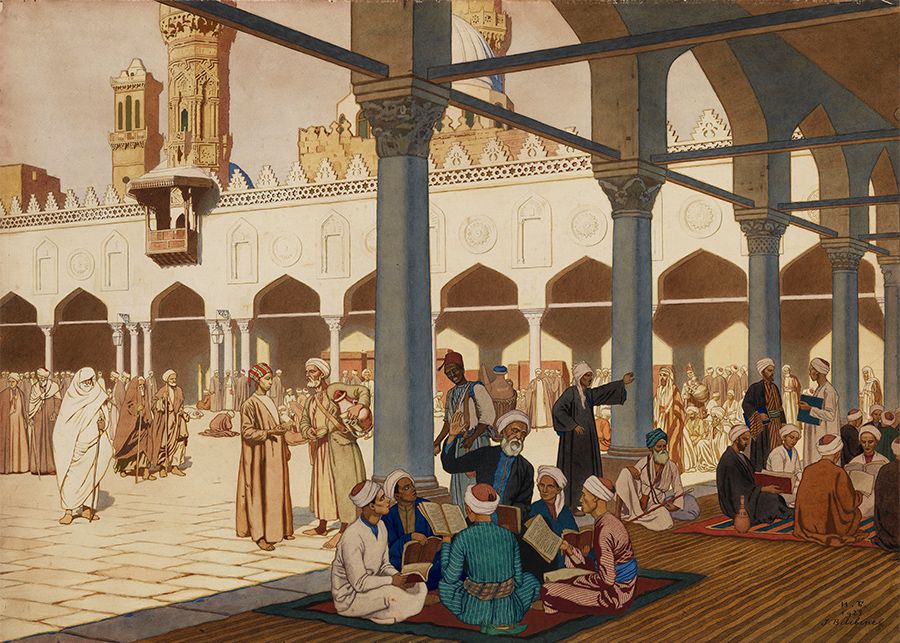
A 1928 print of Al-Azhar Mosque and University, founded in Cairo by the Fatimids in 970. (Getty)
A 1928 print of Al-Azhar Mosque and University, founded in Cairo by the Fatimids in 970. (Getty)
Spreading this belief were several Ismaili da’is (or missionaries) who had arrived in Cairo from Persia and Central Asia. Prominent among them were two men, Hamza ibn Ali, and Muhammad Darazi – and the doctrine they were spreading was incendiary.
The followers of this new movement called themselves the Muwahhidun or Ahl Al-Tawhid (Monotheists or Unitarians). They still do, although at some point during their early history they became known as the Druze, a name derived from that of Darazi, or Al-Darazi, who in the earliest days of the movement fell out with his fellow missionaries.
Dr. Wissam Halawi, a social historian specializing in the medieval Islamic world and assistant professor at the University of Lausanne’s Institute of History and Anthropology of Religions, said Al-Hakim was considered “the nasut, the humanity of the human figure of God on Earth.”
He added: “People who are not very well informed will say, ‘well, the Druze are heretics, because they said that God was on Earth.’ But this is not what they were saying.”
Citing several of Hamza’s epistles to the faithful, Dr. Kais Firro, professor of Middle Eastern history at the University of Haifa, defined what was meant by nasut in a paper, “The Druze Faith – Origin, Development, and Interpretation,” published in the journal Arabica in 2011. The nasut, he wrote, was “not an incarnation of God but a tagalli (manifestation) of an image through which God brings himself closer to human understanding.”
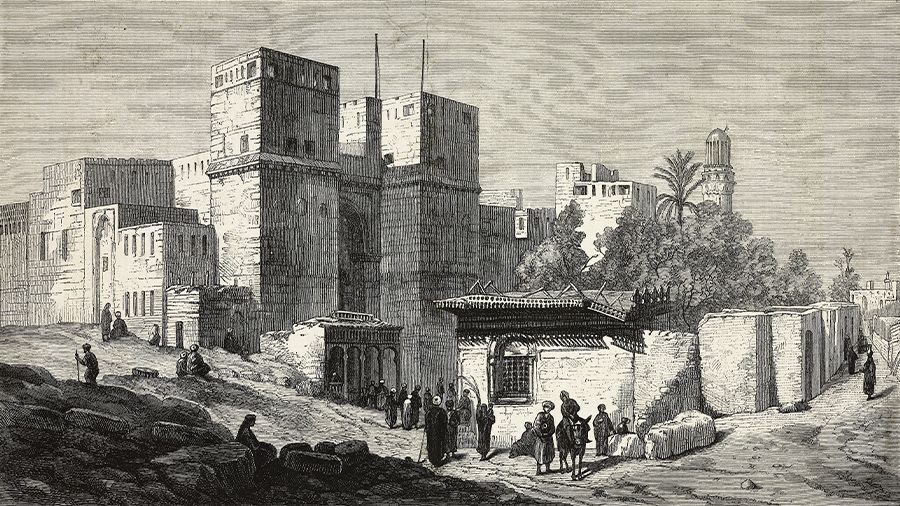
An engraving from 1871 of Cairo's Bab al-Nasr, the Gate of Victory, built by the Fatimids in 1087. (Getty)
An engraving from 1871 of Cairo's Bab al-Nasr, the Gate of Victory, built by the Fatimids in 1087. (Getty)
Abu Shakra said: “Those who argue the faith took a ‘different spiritual path’ overlook the fact that Islam, the last of the three major Abrahamic religions, did not reject the fundamental tenets of Judaism and Christianity, but rather ‘completed and perfected’ God’s messages.”
In his book on Islam Al-Muwahhidin, Druze scholar Dr. Anwar Abu Khuzam, said: “The tawhid faith has a deep sufi (mystic) orientation.” As for their theological beliefs, the Druze, “supplement their Islamic roots with all the philosophical and intellectual tributaries that influenced the Islamic civilization in the early fifth century of the Hijra,” he added.
Much of what is known about the tenets of the faith in its early days comes from the 111 surviving epistles, which were collected together in the 14th century in six books known collectively as the “Rasa’il Al-Hikmah,” or “Epistles of Wisdom.”
But, written as advice for scattered believers on a range of spiritual and secular subjects, these letters contain little in the way of dates and historical facts. In this vacuum of firsthand information, over time various speculative versions of the foundational years of the Druze have emerged.
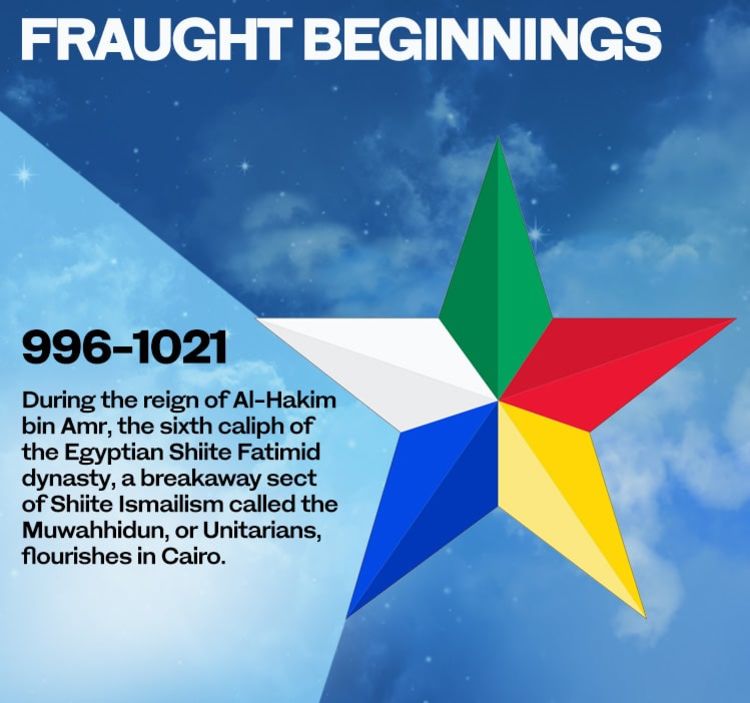
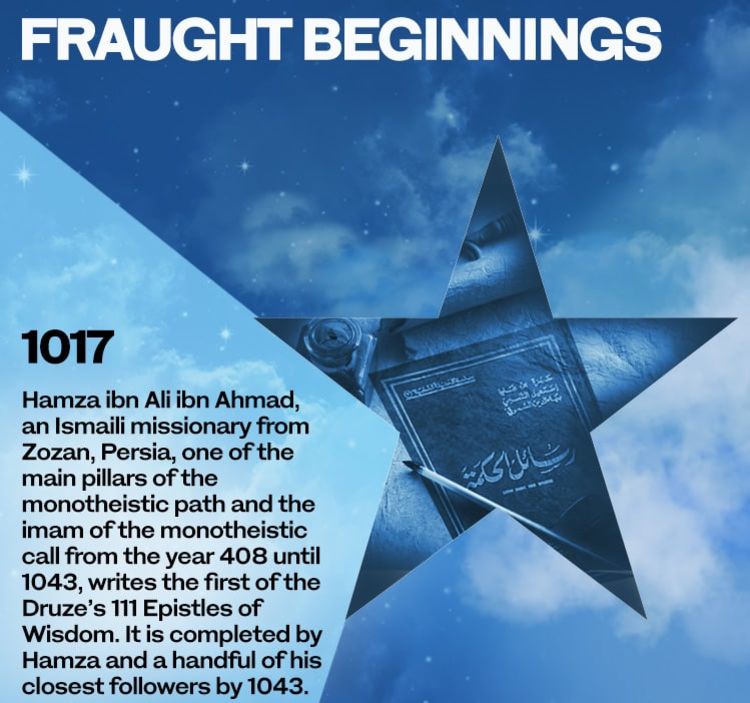
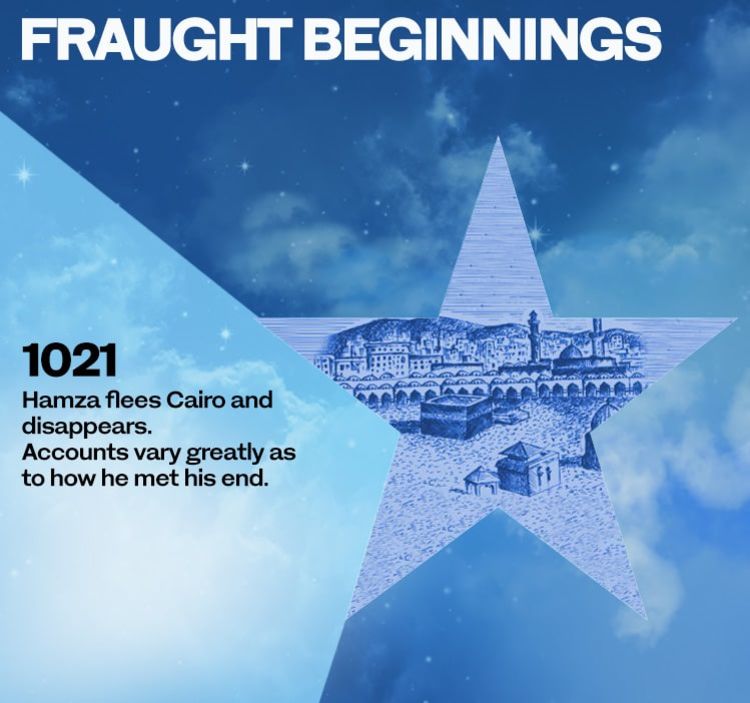
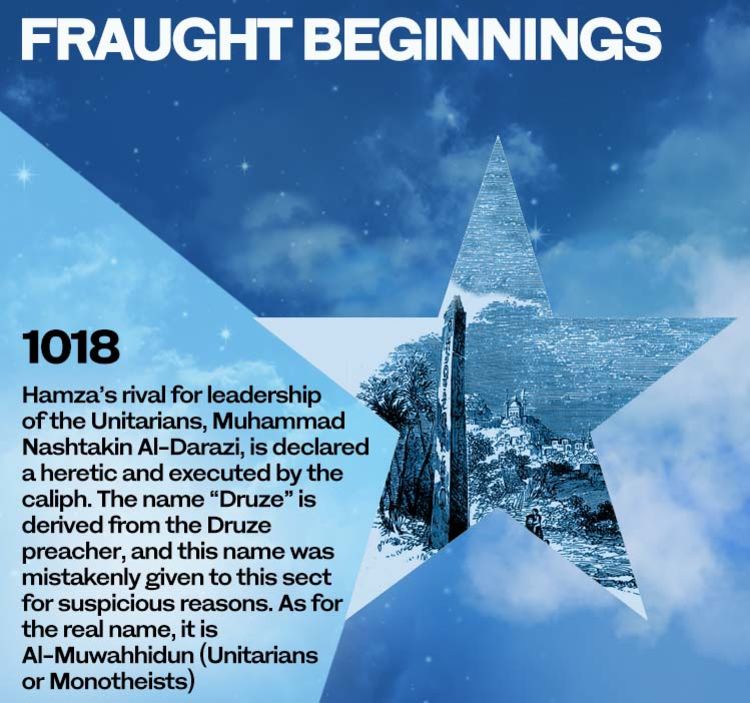
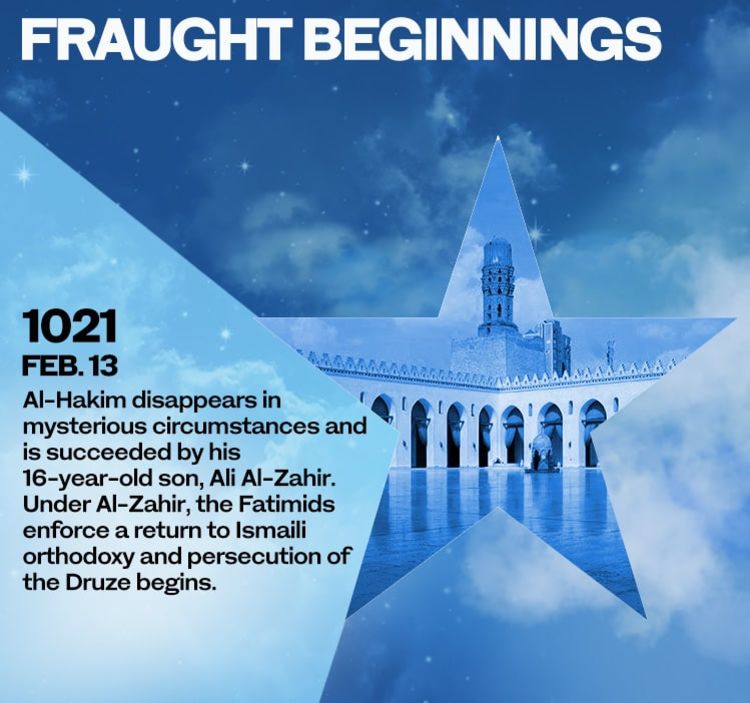
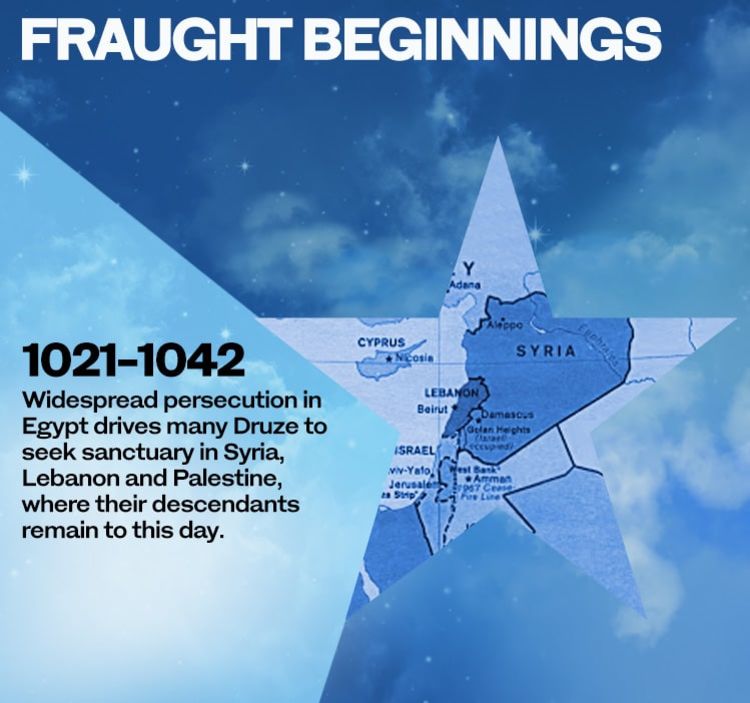

The mystery of Al-Hakim
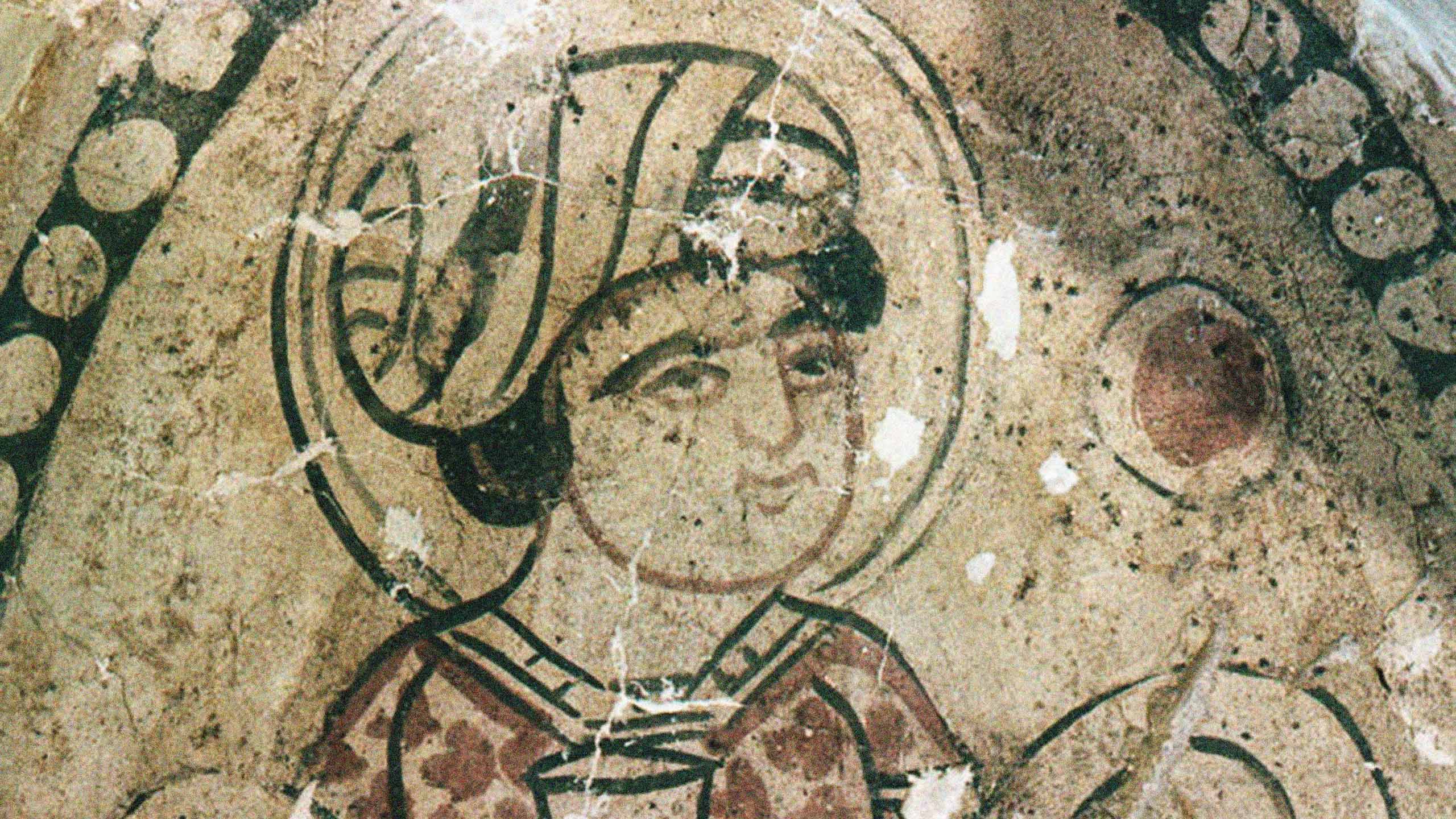
Al-Hakim Bi-Amr Allah, who reigned from 996 to 1021, was the sixth and the most mysterious of the Fatimid caliphs. Under his reign, wrote Abu-Izzeddin, “Syria was brought under firm Fatimid control and enjoyed a period of prosperity.”
But evaluating the reign of Al-Hakim has not been an easy task for historians. Neither the polarized political atmosphere of his period, nor deep prejudices among historians, has allowed for objective assessments. The Ismaili Fatimid-Sunni Abbasi rivalry was reflected in historical records, as were the Fatimid-Christian military confrontations.
In his 1974 book, “Al-Hakim Bi-Amr Allah,” Ismaili scholar Dr. Sadek I. Assaad said: “A satisfactory account of Fatimid history is a most difficult task. The major problem is, of course, the lack of coherent information. By comparison with the profusion of words the sources contain concerning the Umayyad or the Abbasid dynasties, the actual information relevant to the Fatimids is very small.
“In addition to that there is the biased view of chroniclers. Most of them were, directly or indirectly, influenced by bigoted religious beliefs and political hostility. They have labelled the Fatimid caliphs as ‘imposters, irreligious,’ etc., and thus their accounts can hardly do justice to the Fatimid cause.”
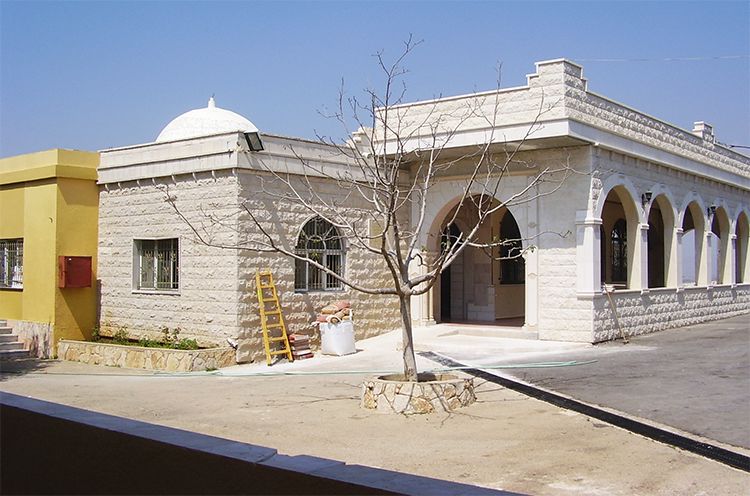
The shrine of Baha Al-Din, one of the founding fathers of the Druze faith, in Beit Jann, Israel.
The Abbasid caliph in Baghdad, “supervised an anti-Fatimid campaign and commanded all learned men of his court to sign a manifesto condemning the Fatimids and accusing them of atrocities and irreligious deeds.”
The Baghdad manifesto accused Al-Hakim in particular, “of assuming divinity and committing irreligious acts.”
The conflicting views of Al-Hakim’s personality and rule would only multiply after his sudden and mysterious disappearance in the 25th year of his reign.
Historian Dr. Paul Walker, deputy director for academic programs at the Center for Middle Eastern Studies at the University of Chicago and a specialist in medieval Islamic history, attempted to sort fact from the fiction surrounding the life and death of Al-Hakim in his ambitious 2009 book, “Caliph of Cairo.”
The challenge he faced was summed up by the title of his first chapter, “Writing the biography of an enigma” – a headline that could just as easily be applied to any account of the early days of the Druze movement itself.
Walker boils down the various versions of the caliph’s disappearance to this: On the evening of Feb. 13, 1021, accompanied by two grooms but no guards, the caliph set out from his palace for his customary moonlit ride through the desert.
The three men were accosted by seven Bedouin tribesmen who demanded money. Al-Hakim sent the grooms back to the palace to fetch it and that was the last anyone ever saw of him. After a few days, a search party found only his robes, stabbed through with a blade, and his brutally hobbled mount.
Theories abounded, wrote Walker. “Was Al-Hakim really deceased, murdered somehow, or could he, as yet another possibility, have chosen instead to abandon his royal life, wandering off to live as a reclusive ascetic?”
Whatever the cause, Al-Hakim was gone and, with his disappearance, the fortunes of the briefly favored embryonic Druze movement took a dramatic turn for the worse.
Through the influence of his sister Sitt Al-Mulk, the caliph was succeeded by her nephew, Al-Hakim’s 16-year-old son, Ali Al-Zahir, and under his authority the Fatimids enforced a return to Ismaili orthodoxy and embarked on a persecution of the Druze.
Hamza ibn Ali and all but one of the other five leaders immediately went into hiding. Those followers who escaped Al-Zahir’s threat to put to the sword all those who believed in his father’s supposed divinity fled Egypt and sought refuge in southern Lebanon, Syria, and Palestine, where their descendants remain to this day.
Again, facts are obscured by the fog of time. After fleeing Cairo in 1021, as far as anyone knows Hamza was never seen again, although he does appear to have communicated by letter with his deputy and successor, Al-Muqtana Baha Al-Din (Ali ibn Ahmad Al-Sammouqi Al-Ta’i). According to some accounts, Hamza sought sanctuary in Makkah, but was arrested there by the sharif and put to death.
But the Druze were not finished. Baha Al-Din continued spreading the word and supporting the faithful. For the next two decades, until his own death in 1043, he also oversaw the collection of the 111 “Epistles of Wisdom,” that had been written by Hamza and a handful of his closest followers.
The epistles were finally compiled into the six books of the “Rasa’il Al-Hikmah” in the 16th century by Jamal Al-Din Abdallah Al-Tanukhi (also known as Al-Amir Al-Sayyed Abdallah), a Druze theologian whose tomb in Lebanon is still visited by Druze pilgrims.
The last known epistle to the faithful was written by Baha Al-Din himself, in 1043. In it, seeking safety in secrecy for believers, he ordered them to hide their beliefs and end the period of proselytization that had been started by Hamza 26 years earlier. The Druze faith was closed to newcomers forever.
Obeid said: “Just like any minority that faces persecution, it protected itself in a kind of dissimulation.” The Muwahhidun, he added, “feared that the faith would fall into the wrong hands, and so they protected it by splitting into the uqqal (initiates, or the wise) and the juhhal (non-initiates, or the ignorant).”
For the next 50 years, until the arrival of the Christian crusaders in the Holy Land in 1099, history records nothing of the Druze. When they do feature in accounts of the Christian occupation of the Levant, it is with a reputation as fierce warriors dedicated to the defeat of the Crusader armies.
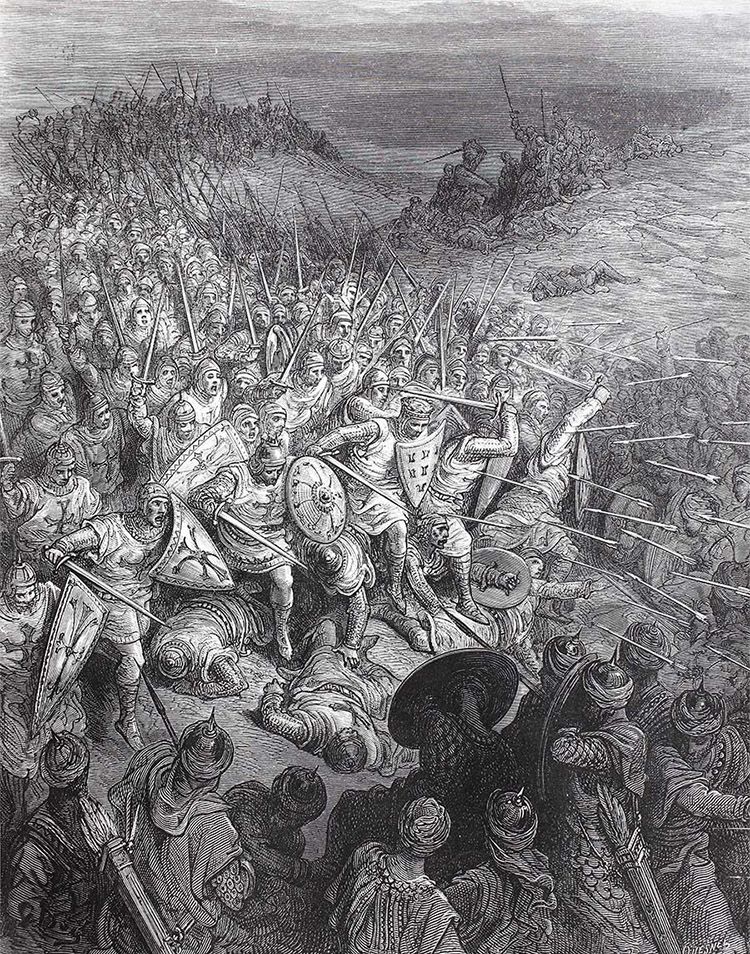
From the end of the 11th century and throughout the Christian occupations of the Holy Land, Druze warriors played a prominent role in resisting the Crusader armies from Europe. (Getty)
In his 1988 book “The Druze,” Dr. Robert Brenton Betts, director of the American Research Center in Egypt, said: “After 1043, a closed and secretive community, they effectively blended into the Levantine landscape, as yet another religious cult that had aimed for universal acceptance but survived as a reduced remnant that kept very much to itself, refusing to share its beliefs with the various neighboring religious communities that to this day make up the religious patchwork that is Mount Lebanon.”
Over time, the mystery surrounding the Druze and their beliefs deepened, a situation which suited the members of the secretive sect well enough. The terror that had followed the disappearance of Al-Hakim had instilled a belief that persecution, or mihna, was a test of their faith and a precursor to the last judgment, to be attended by a reappearance of the sixth caliph.
Then, as now, for self-protection they became like cultural chameleons, adept at blending into their surroundings.

The shrine of Baha Al-Din, one of the founding fathers of the Druze faith, in Beit Jann, Israel.
The shrine of Baha Al-Din, one of the founding fathers of the Druze faith, in Beit Jann, Israel.

From the end of the 11th century and throughout the Christian occupations of the Holy Land, Druze warriors played a prominent role in resisting the Crusader armies from Europe. (Getty)
From the end of the 11th century and throughout the Christian occupations of the Holy Land, Druze warriors played a prominent role in resisting the Crusader armies from Europe. (Getty)
Myths and misconceptions
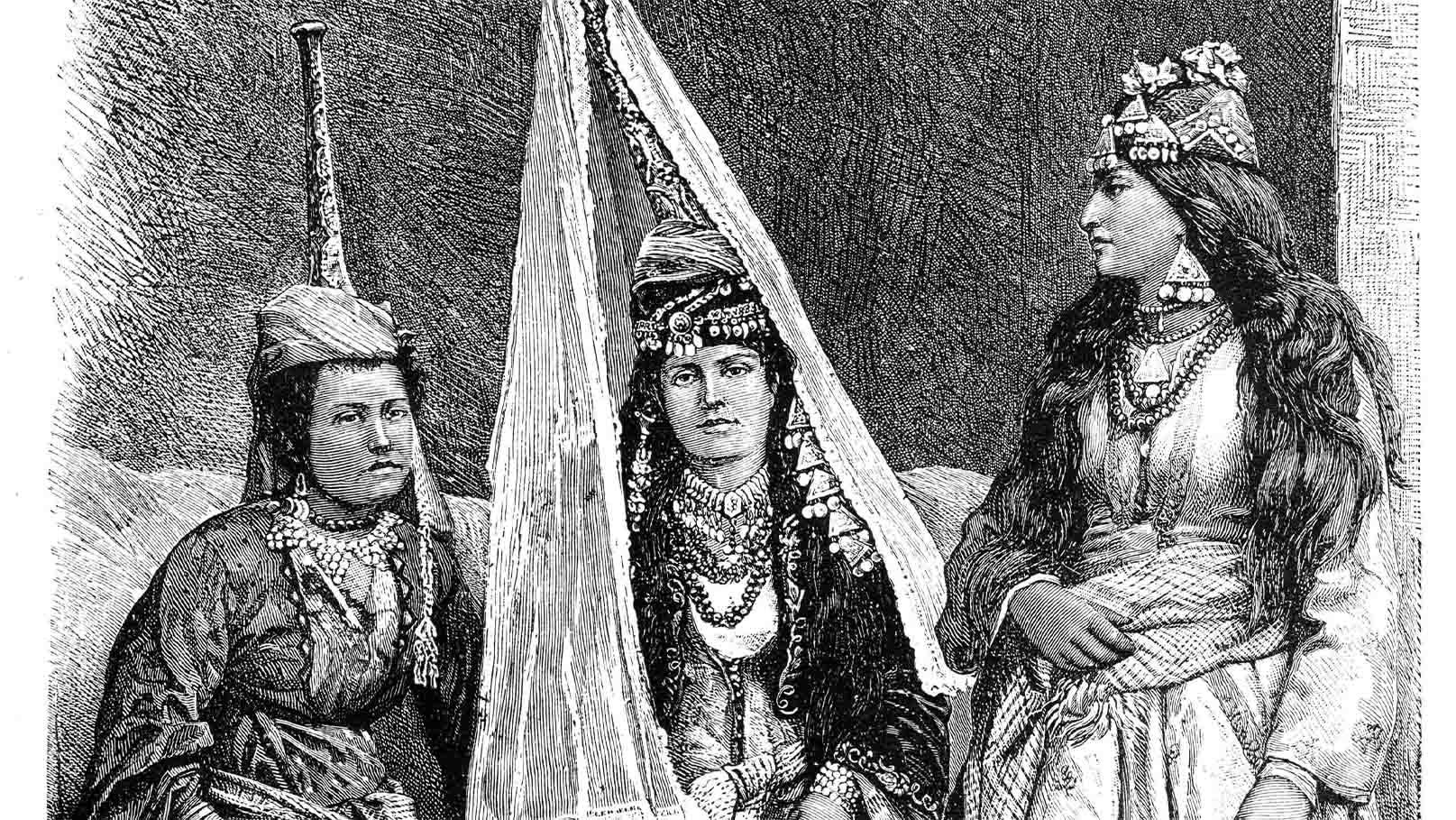
The self-imposed secrecy surrounding the Druze and their faith ensured that over the centuries myths about their origins inevitably began to accumulate.
“It is impossible to understand the ethnic identity of the Druze without addressing the history of the Middle East and recalling that it is a land of ancient and overlapping civilizations,” Abu Shakra added.
“It is the cradle of the world’s three Abrahamic religions, the nexus of the two historic trade routes, the Incense Route, and the Silk Road, and is situated at the crossroads of Asia, Africa, and Europe. Thus, given the conquests, intermarriages and displacements throughout history, the anthropology of the Middle East is too complex to allow for talk of pure races.”
Nevertheless, the overactive imaginations of countless Western authors and “historians” have linked the Druze variously to the Druids of ancient Britain, the secretive medieval European fraternity of Freemasonry, the subjects of the Phoenician King Hiram of Tyre, the builders of Solomon’s temple and even, in one account, “the remnant of Israel who fled the wrath of Moses after the destruction of the molten calf.”
One of the more romantic of the myths is more suited to the plot of a Dan Brown novel than the pages of a serious history book. In the 17th century, the popular imagination in France was seized by the idea that the Druze were the descendants of the survivors of a lost army of Christian crusaders from Europe, who had fled the wrath of the victorious Mamluks after the fall of the Christian stronghold of Acre in 1291, sought refuge in the mountains of Lebanon, and never left.
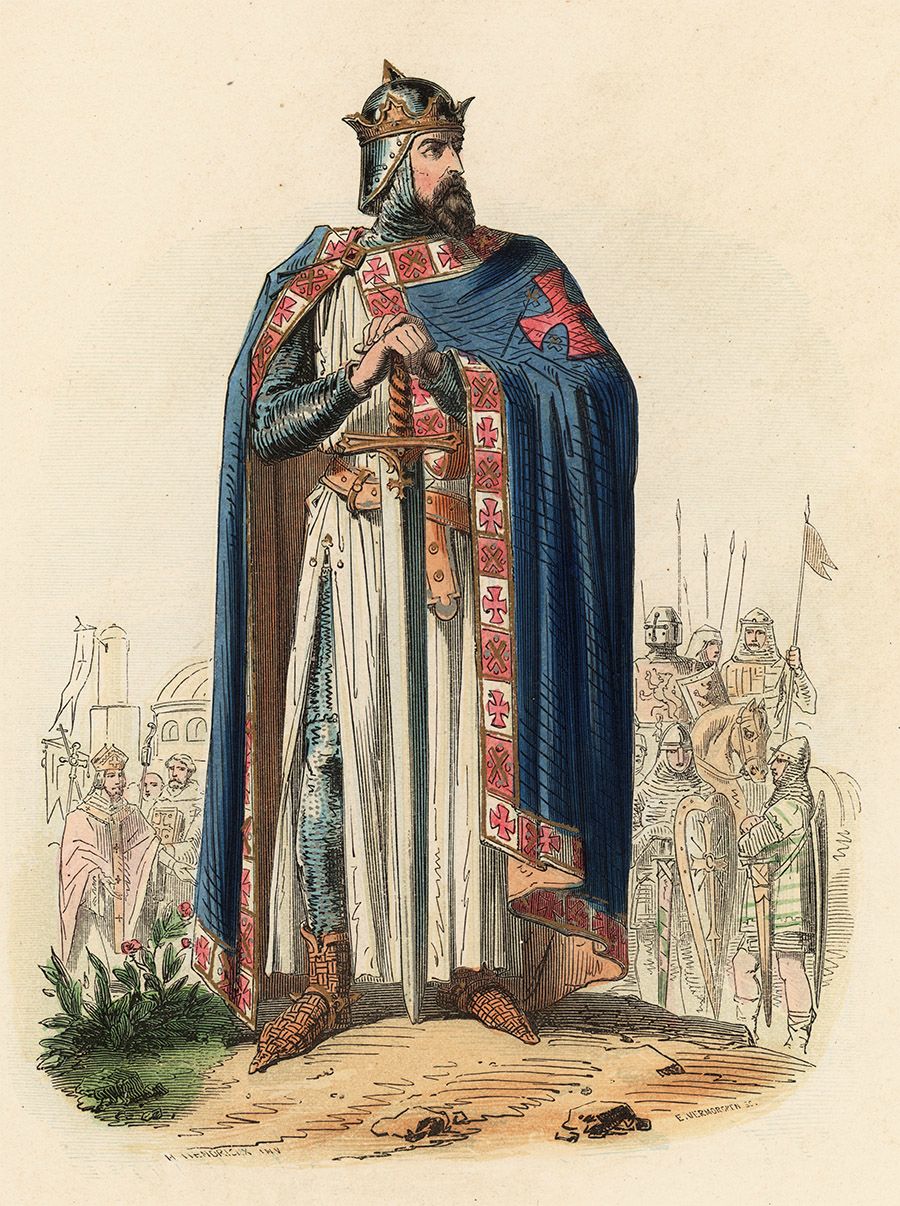
One fanciful theory popular in 18th-century France was that the Druze were descended from a defeated Crusader army whose survivors had sought refuge in the mountains of Lebanon. (Getty)
One fanciful theory popular in 18th-century France was that the Druze were descended from a defeated Crusader army whose survivors had sought refuge in the mountains of Lebanon. (Getty)
By 1763 the myth had become “fact,” cemented by the publication of the book “Histoire des Druses, Peuple du Liban, forme par une colonie de Francois,” by the highly imaginative but wholly ill-informed writer Puget de Saint-Pierre.
Most Druze historians, however, agree with Emir Shakib Arslan, the prominent Druze pan-Islamist and Arabist intellectual and politician, who has contended that, while a few notable families are of Turkish and Kurdish origin, in the main the Druze are pure Arabs. On one occasion, he wrote: “No Arab outside of the Arabian Peninsula is as close to Arab purity as the Druze.”
Arab tribes, said Abu Shakra, “had already settled in many parts of today’s Syria, Iraq, and Turkey before the Islamic conquest,” as evidenced by three regions that carry Arabic tribal names. He added: “During the Umayyad era, Arab tribes had also settled in Transoxiana, including the present-day former Soviet central Asian republics of Uzbekistan, Turkmenistan, and Kazakhstan.”
In her book, Abu-Izzeddin pointed out that the Druze claim to Arab origin was not motivated by considerations of self-interest, for the Arabs were no longer in the ascendant when the Druze community was constituted during the first half of the 11th century.
Non-Arab dynasties, such as the Ayyubids, Saljuks, Mamluks and, eventually, the Ottomans, were the dominant powers at that time and for centuries afterward.
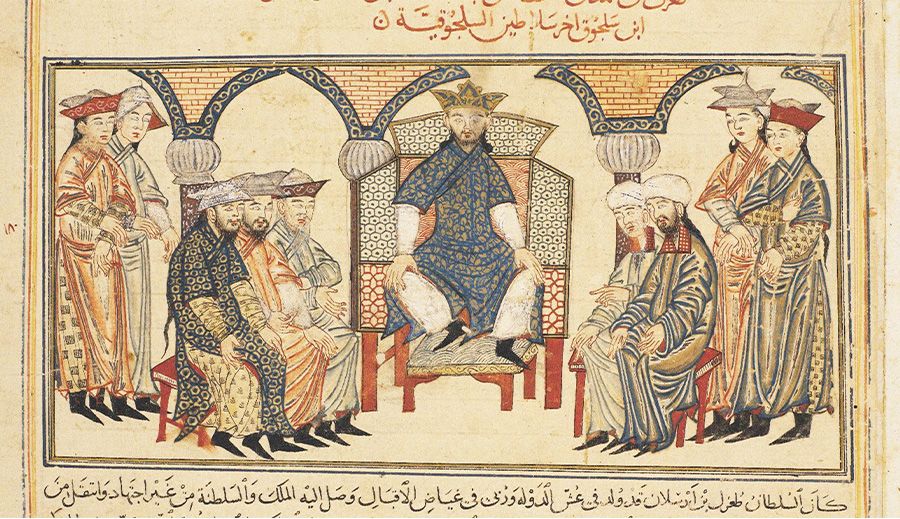
For centuries the Druze survived under a series of non-Arab regimes, including the Saljuks, a Turkish-Persian dynasty that dominated the Levant in the 11th century. (Getty)
For centuries the Druze survived under a series of non-Arab regimes, including the Saljuks, a Turkish-Persian dynasty that dominated the Levant in the 11th century. (Getty)
Pinning down the origins, and more so the beliefs of the faith, has been a challenge that has intrigued and frequently defeated generations of historians, mainly because the Druze, notoriously unforthcoming – or uninformed – about their beliefs, prefer to remain in the shadows.
Then and now, theirs is not a faith to be worn on the sleeve, nor one that, other than for a brief period in the 11th century, accepts converts.
To this day, a difficulty when it comes to comprehending the beliefs of the Druze is that secrecy about the faith extends even to the majority of those who follow it, as it has done since its earliest days. In the face of the persecution in 11th-century Egypt, “our ancestors the Muwahhidun shut down religiously,” Obeid said.
“Many of the Druze themselves have no idea what their faith is about, except for a few talking points,” added Obeid, whose maternal grandfather was the head of the Druze Council in Aley, Lebanon. For generations, only the select few admitted to the ranks of the uqqal have had access to the “Epistles of Wisdom,” while the juhhal have always relied upon oral instruction.
Although the Druze venerate a number of prophets – such as Jethro (Shu’aib) and Job (Ayyub) – and have shrines, their religious meetings (which they call Laylet Al-Jum’a) take place on Thursday evenings, either in the home of a senior member of the community or in the “simple and austere setting” of a community majlis, or meeting place.
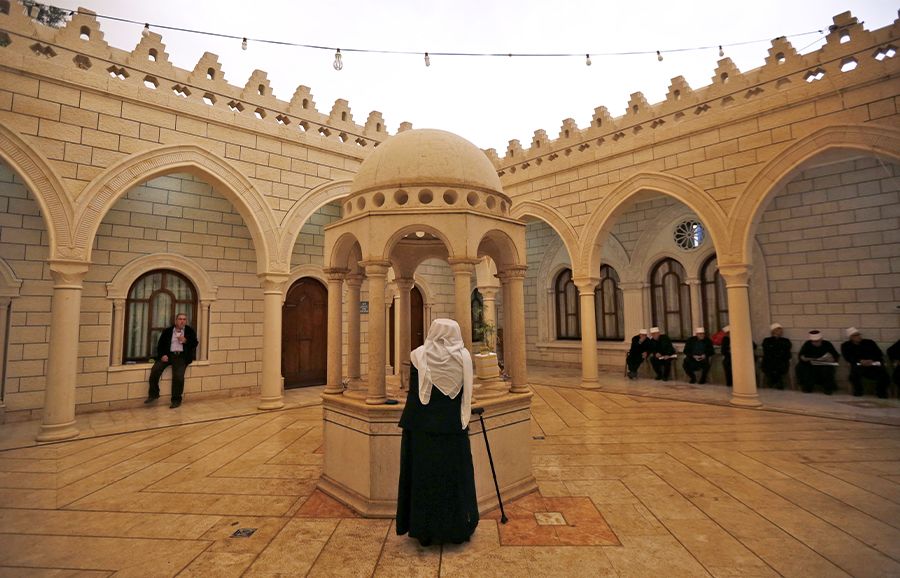
The shrine housing the tomb of the Prophet Shu’aib, near Tiberias in northern Israel, has been a destination for Druze pilgrims for centuries. (AFP)
The shrine housing the tomb of the Prophet Shu’aib, near Tiberias in northern Israel, has been a destination for Druze pilgrims for centuries. (AFP)
Obeid said: “At the end of the preaching session the juhhal are politely excused and the inner circle of uqqal resume the process of formal worship.” This normally consisted “of reading designated passages from the ‘Books of Wisdom’ and from writings of other religious scholars.” Passages from holy books, including the Qur’an, “are read and interpreted in the light of the tenets of the faith.”
Over the years, some versions the full “Rasa’il Al-Hikmah,” the collection of 111 epistles written to followers by the original leaders of the Druze, have been published, supposedly based on manuscripts held in Western libraries. Druze religious leaders, however, have dismissed these as corruptions, created by religious opponents to misrepresent the faith.
One result of this secrecy, and of the initiate system, is that no two “ordinary” Druze appear to have exactly the same perception of the tenets of their faith and how to go about observing it.
One example is the Druze belief in reincarnation, taqammus: That there is only a limited number of souls on Earth and that when a person dies their soul is immediately transferred into another, new-born human.
“The Druze believe that life does not begin at inception and end at death. It is a continuous journey and so they believe that the distillate of any life is carried on to the next – the soul is the passenger, as it were, and the body is the vehicle. The moment the vehicle stops functioning, then the passenger moves to another, a newborn, and the journey continues,” Obeid added.
The Druze do not believe in the transmigration of souls to higher or lower beings. There was, however, “no blanket agreement among Druze regarding reincarnation,” as California State University anthropologist Anne Bennett wrote in the journal Ethnology in 2006, following a series of interviews with Druze in urban and rural areas of southern Syria.
There were, she concluded, “many who are skeptics about the phenomenon and dismiss it outright,” while at the same time, “there are many others who circulate stories and maintain a curiosity and openness about the phenomenon.”
Regardless, the Druze concept of reincarnation reflects an ultimate destination. Obeid said: “Ultimately, the purpose of this journey is to eventually reach the closest proximity to the Creator.”
There were, he added, “no known written codes or regulations that govern this religious order,” yet “its members adhere to strict rules of conduct in personal and public life and remain under continuous peer review and scrutiny.”
For the juhhal, who comprise the vast majority of Druze, adherence to their faith is uncluttered by ritual, or even a deep understanding of its guiding scriptures, but is focused on its central doctrine of Tawhid. This, Obeid said, “refers to the attestation to the oneness of God as well as to the unity of the universe in all its aspects within the oneness of the Creator.”
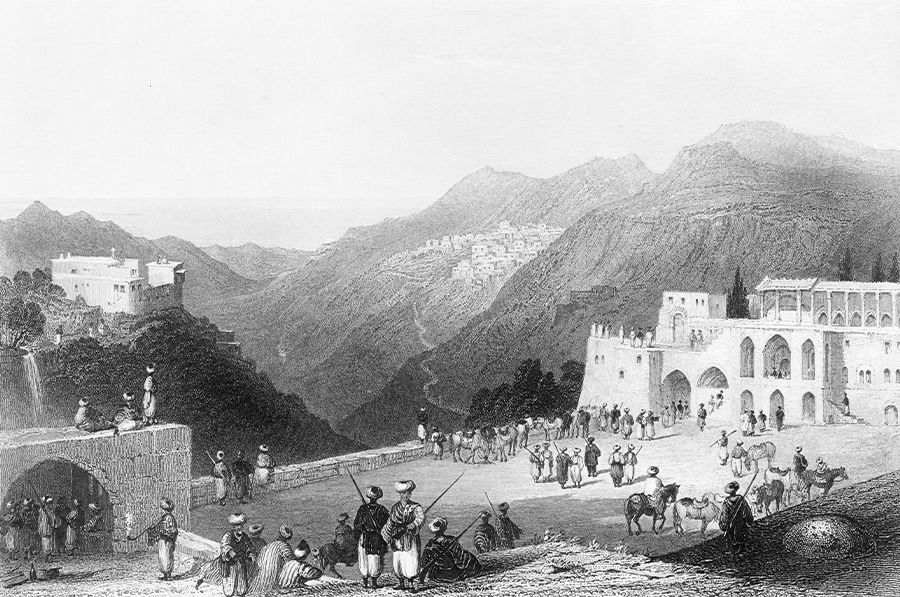
A 17th-century engraving of Beteddein Palace, "residence of the chiefs of the Druzes," in Lebanon. (Getty)
A 17th-century engraving of Beteddein Palace, "residence of the chiefs of the Druzes," in Lebanon. (Getty)
This license to think – to “seek guidance in this quest (for knowledge and enlightenment) with the exercise of free will ... and the use of reason” – is embedded in the broad range of scriptures and philosophies upon which Druze thinking draws.
Although Islam, “through revelations in the Qur’an, is the foundation on which the philosophy of Tawhid is based and the gateway to such knowledge,” Tawhid also draws from other monotheistic faiths and “also from philosophical and mystical practices that preceded or were outside the scope of traditional Islam.”
None of this intellectual underpinning is lost on today’s Druze. Quoting Dr. Abdallah Najjar, a distinguished elder of the Druze and Arab American community in the US, Obeid wrote: “As a Druze, the East and West merged in me. For 1,000 years I have been in the midst of the stream of human history, championing the dignity of man and fighting for his freedom.
“As a Druze, I am a Muslim influenced by Oriental theology and Western thought, by Christian witness, Judaic law, and esoteric practice. As a Druze, I am a proud mountaineer reared in the puritan and tribal tradition of an austere and devout society.”






A scattered people

In the world today there are an estimated 1.5 million Druze, mainly in Syria, Lebanon, Jordan, and Israel, but they are also to be found scattered throughout the world, in communities large and small, from America to Australia.
Reflecting centuries of adherence to the self-protecting principle of taqiyya – the tactical concealment of religious belief in the face of persecution – each of these communities, while adhering to the tenets of their faith, has adapted to its surroundings, pledging allegiance to whichever state in which they find themselves.
In the Middle East, over generations that has meant adapting to the seismic shifts of geopolitics. When the Druze fled the persecution suddenly meted out to them in 11th-century Cairo, the lands to the east where they resettled and where the faith grew bore little resemblance to the shape of the nation states of the Middle East they would become in the 20th century.
Under the Ottoman Empire, between the 16th and 19th centuries the Druze had enjoyed a certain amount of autonomy in the Mount Lebanon mountain range. After World War I, however, and the dividing up between the victorious allies of the spoils of the defeated Ottoman Empire, the Druze found themselves living under the control of the French in the newly created mandates of Syria and Lebanon, and under the British in Palestine.
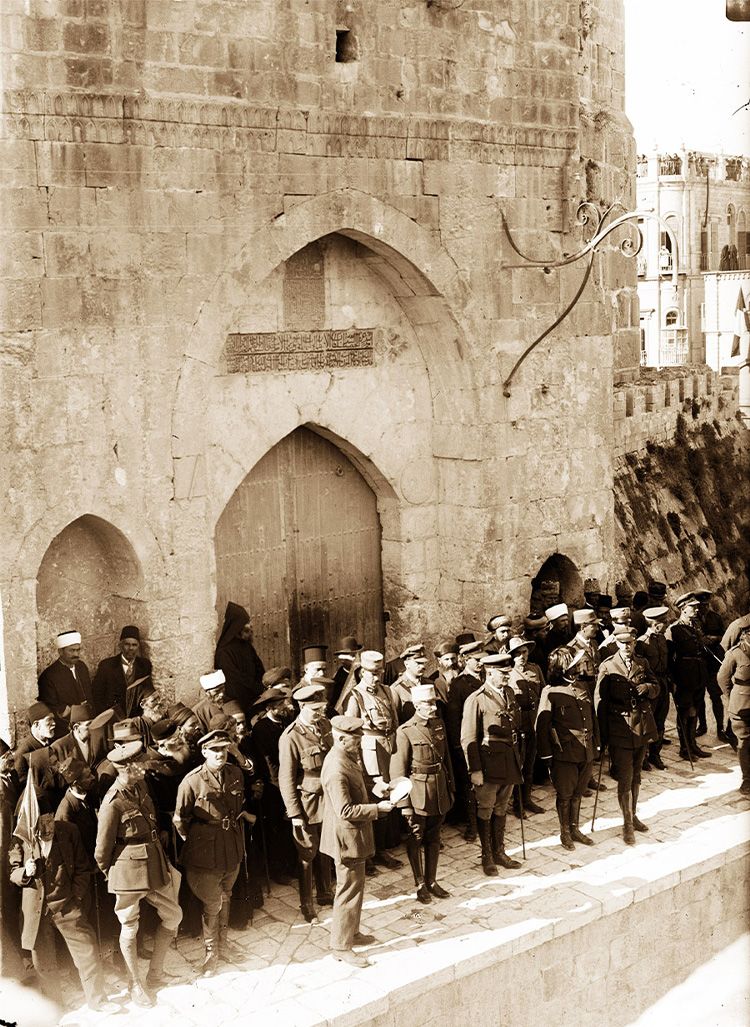
Out with the Ottomans, in with the British. With the fall of Jerusalem in 1917, the Druze in Palestine found themselves under the control of the British Empire, whose mandate ended only with the creation of the state of Israel in 1948. (Getty)
The French left in 1946. Between 1975 and 1990 independent Lebanon was wracked by civil war and, until 2005, experienced a series of interventions by Israeli and Syrian troops. Regardless, the Druze remain entrenched today in Mount Lebanon and further south in the fertile Wadi Al-Taym – the place where the Druze first appeared under that name in the written record.
In post-war Mandatory Palestine, under British control the Druze weathered serial conflict between Arabs and Jews, the foundation of Israel in 1948, and the subsequent Arab-Israeli war.
Further south, even the hiving off after World War I of much of the Ottoman Vilayet of Syria into the British protectorate of Transjordan, which in 1946 achieved independence as the Hashemite Kingdom of Transjordan, failed to dislodge the Druze from their historic homeland in the north of the region.
In Syria, the Druze endured as the land went through a series of painful transformations, paroxysms of identity that continue to this day, from the creation of the post-war French mandate and then the Syrian Republic under French control in 1930, to independence in 1946, a coup d’etat in 1963 and, most recently, the Syrian civil war, which began in 2011 and is ongoing.
Intriguingly, at one point during the upheavals that followed World War I, the Druze came close to acquiring their own autonomous state, albeit under French oversight, in a small part of Syria. On March 4, 1922, the French created the autonomous State of Suweida, roughly equivalent to the Jabal Al-Druze area occupied by the Druze in Syria today. According to a French census in 1922, the population of the area of the state was comprised mainly of 43,000 Druze (more than 84 percent of the total), living alongside 7,000 Christians, and 700 Sunni Muslims.

In 1927, it was renamed Jabal Al-Druze State, but it ceased to exist after Syrian nationalists – led into revolt by the revered Druze leader Sultan Al-Atrash – won independence from France under the Franco-Syrian Treaty of 1936. In the event, France did not withdraw its troops until 1946, when the Syrian Republic was finally recognized by the UN.
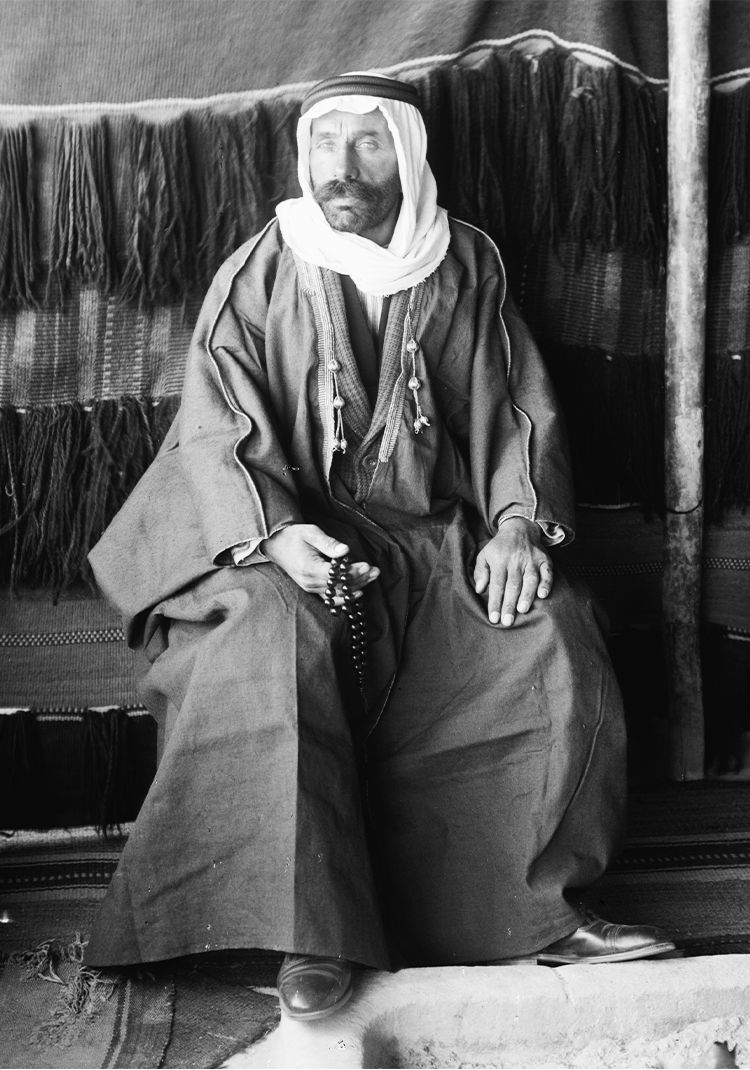
Sultan Al-Atrash, Druze hero of the Syrian uprising against the French. A million people attended his funeral in 1982.
Tellingly, Al-Atrash had not sought independence solely for the Druze; what he wanted was national sovereignty for the whole of Syria. Today he is a hero to Syrians and the Druze alike, commemorated with statues in villages in the Jabal Al-Druze. When he died in 1982, his funeral in Suweida was attended by 1 million people.
Throughout history, the remarkable thing about the Druze is that somehow, even as storms of geopolitical upheaval raged around them, they managed not only to avoid annihilation – if not always conflict – but were also able to hold onto their lands and their distinct identity while living alongside their Sunni and Shiite Muslim, Christian, or Jewish neighbors.
At the same time, of course, over the decades the pressures of life for a minority in the world’s historically most tempestuous region has seen many Druze seek their fortunes and a better future overseas. But wherever they have put down roots, the secret to their success can be traced back to the farewell epistle of Baha Al-Din, the former disciple of Hamza ibn Ali ibn Ahmad, in which he urged followers to conceal their allegiance to the faith.
Perhaps nowhere is this commitment to the principle of taqiyya more practically demonstrated than in Israel, where some 150,000 Druze live, mainly in Galilee, the Carmel region and, since its annexation by Israel in 1981, the Golan Heights.
Unlike other Arabs in the country, Druze and Sunni Bedouins are subject to conscription into the military alongside other Israelis. For decades Druze soldiers served in their own Herev (Sword) Battalion, which was disbanded in 2015 after 67 years.
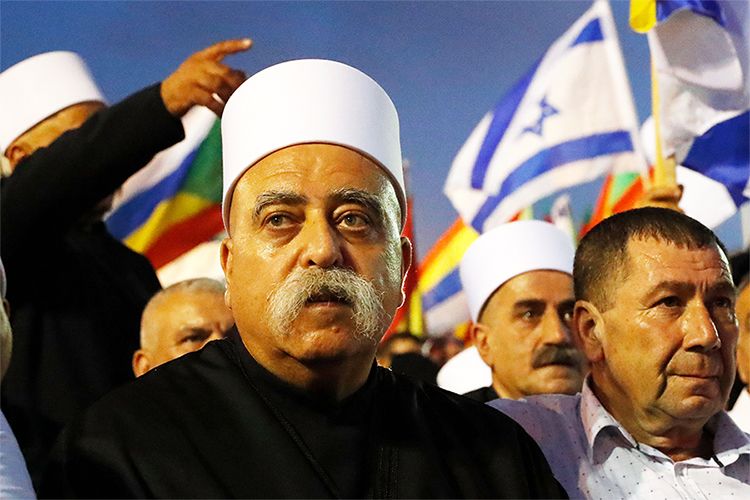
Druze spiritual leader Sheikh Muafak Tarif at a rally in Tel Aviv in 2018, protesting at Israel's "Jewish Nation-State Law."
Given the commitment of some of the community to the Israeli state, the Druze reacted with outrage to Israel’s recent and controversial nation-state law, which enshrines Israel as “the national home of the Jewish people” and declares that “the right to exercise national self-determination in the State of Israel is unique to the Jewish people.”
In protests backed by prominent Jewish leaders, thousands of Druze took to the streets to demonstrate against the law, which they saw as a betrayal of their generational commitment to Israel.
“Despite our unlimited loyalty to the state, the state doesn’t consider us equals,” chief Israeli Druze spiritual leader, Sheikh Muafak Tarif, told a rally of 50,000 people in Tel Aviv’s Rabin Square in August 2018.
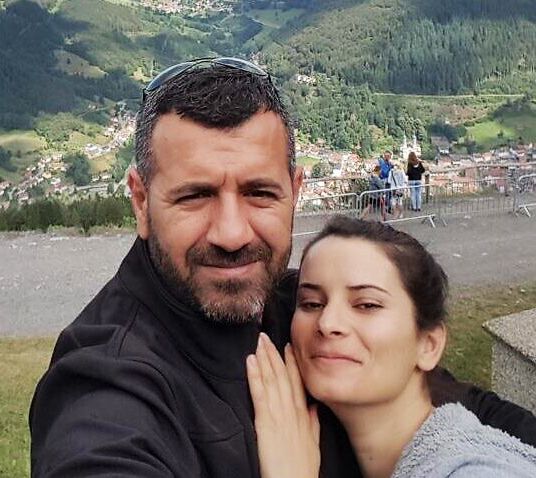
Lt. Col. Mahmoud Kheir El-Din, a Druze member of Israel's special forces who was killed in 2018, was hailed a hero by the Israeli government when his identity was released in May 2022.
In May 2022, Israel’s Finance Minister Avigdor Liberman called for the nation-state law to be amended. He was speaking after the release of the identity of an Israeli special forces officer killed in a covert operation in the Gaza Strip in 2018.
Lt. Col. Mahmoud Kheir El-Din, a member of the Druze community, had been hailed as an “Israeli hero” by Prime Minister Naftali Bennett.
In a tweet, Liberman said there was “a clear contradiction between the nation-state law in its current form and the praise given to Lt. Col. Mahmoud Kheir El-Din.” In a tweeted response, Israel’s Foreign Affairs Minister Yair Lapid, said: “I agree with every word.”
Fitting into society may have posed more challenges for Druze living in Israel than in some other parts of the Middle East and beyond. But the importance of integration, while adhering to the tenets of their faith, is something of which all Druze are keenly aware, wherever life takes them.

Out with the Ottomans, in with the British. With the fall of Jerusalem in 1917, the Druze in Palestine found themselves under the control of the British Empire, whose mandate ended only with the creation of the state of Israel in 1948. (Getty)
Out with the Ottomans, in with the British. With the fall of Jerusalem in 1917, the Druze in Palestine found themselves under the control of the British Empire, whose mandate ended only with the creation of the state of Israel in 1948. (Getty)

Sultan Al-Atrash, Druze hero of the Syrian uprising against the French. A million people attended his funeral in 1982.
Sultan Al-Atrash, Druze hero of the Syrian uprising against the French. A million people attended his funeral in 1982.

Druze spiritual leader Sheikh Muafak Tarif at a rally in Tel Aviv in 2018, protesting at Israel's "Jewish Nation-State Law."
Druze spiritual leader Sheikh Muafak Tarif at a rally in Tel Aviv in 2018, protesting at Israel's "Jewish Nation-State Law."

Lt. Col. Mahmoud Kheir El-Din, a Druze member of Israel's special forces who was killed in 2018, was hailed a hero by the Israeli government when his identity was released in May 2022.
Lt. Col. Mahmoud Kheir El-Din, a Druze member of Israel's special forces who was killed in 2018, was hailed a hero by the Israeli government when his identity was released in May 2022.
The Druze today
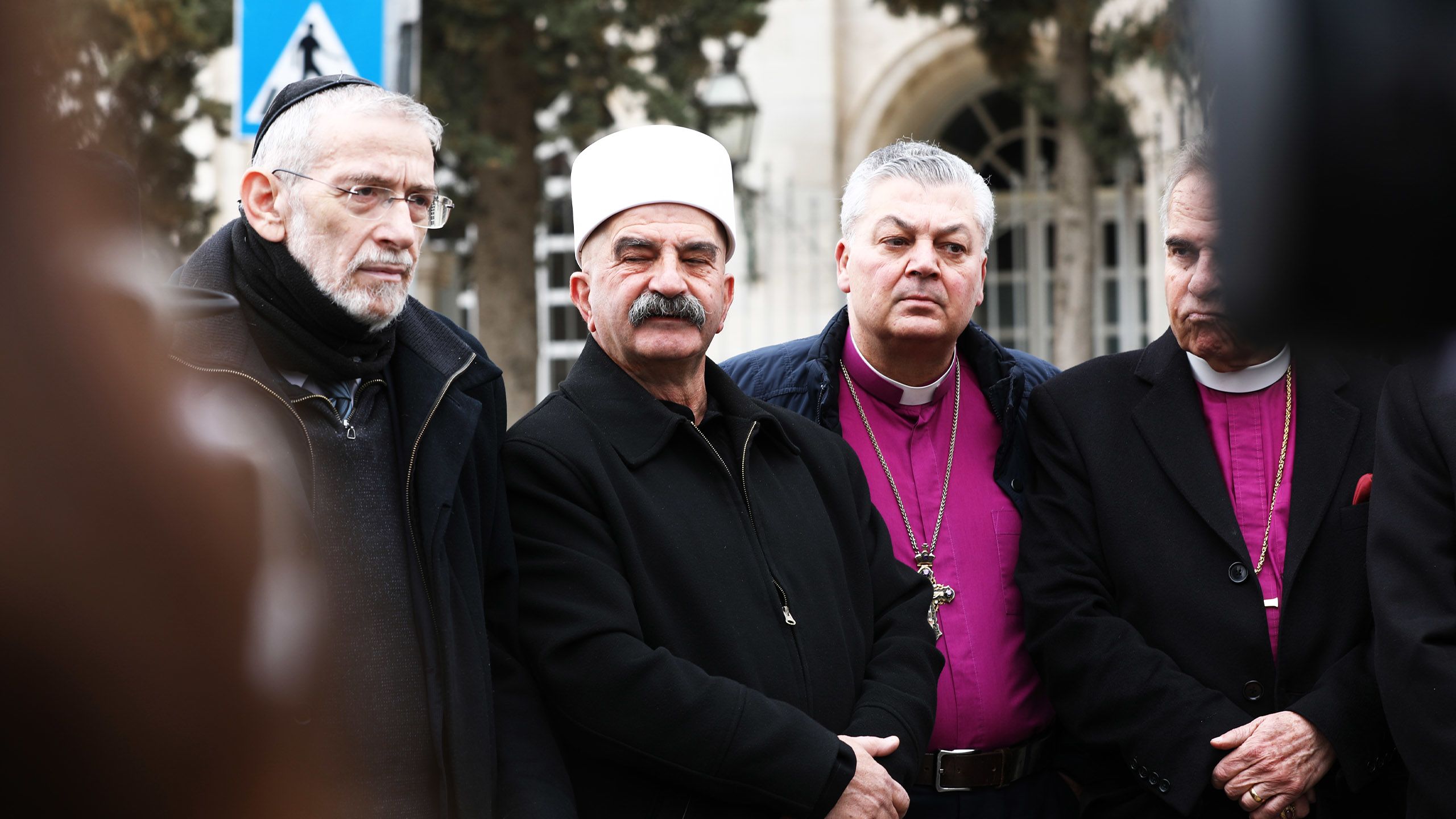
“The Druze are loyal to the ground they live on, and they protect it, as we’ve seen in Lebanon and Syria, and Palestine,” said Nabil Abou-Hassan, 74, who settled in the UK with his family 20 years ago.
“Wherever we are, we integrate within the society wholeheartedly – we contribute and become part of the community. It has always been this way. We are a loyal people by nature.”
But he added: “We are always mindful that we are a minority, and we are cautious about that, especially when we are back in Lebanon or Syria and such places.”
Born in Nigeria, where his father ran a road-haulage business, Abou-Hassan returned to Lebanon for schooling before joining his father in the family company. He lived for much of his working life in Nigeria with his wife, Amal, and his own children, Ramzi, now 52, and daughter Iman, 49, were born there.
He finally settled in the UK two decades after the company opened an office there and is now president of the British Druze Society, which was founded in 1983.
He said: “At that time, there were about 500 Druze in the UK. Now, things have changed. There has been an exodus of people from Lebanon and Syria, including the Druze, because of the situations there.”
More than 1,500 Druze are currently estimated to be living in the UK.
Ghassan Saab, 76, is another Druze of the same generation who was able seamlessly to transfer his life and his faith to another land and culture.
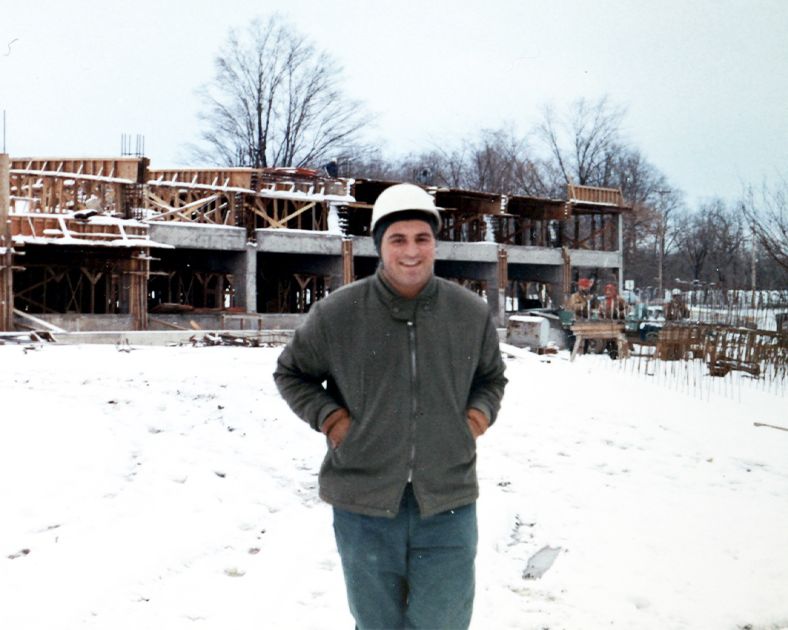
Ghassan Saab at work in Flint, Michigan, in 1966, his first year in the US after emigrating from Lebanon.
Ghassan Saab at work in Flint, Michigan, in 1966, his first year in the US after emigrating from Lebanon.
He was just 22 in 1966 when, fresh from obtaining a degree in civil engineering from the American University of Beirut, he found his way to the US city of Flint, in Michigan. There, he landed a job as a field engineer with Sorensen Gross, a long-established local building company specializing in industrial, commercial, and institutional projects.
Saab was born in 1944 in the Druze town of Choueifat, just south of Beirut, the eldest of the four children of Mahmoud and Najla Saab. When he first arrived in the US in 1966, he did not plan to emigrate permanently. But in 1970, he “made the final decision that my home is going to be the United States, and that’s when I started to work on my citizenship and ultimately my pledge of allegiance to the country.”
Success had certainly come quickly in his new land. Within five years of joining Sorensen Gross, Saab had risen rapidly through the ranks, first becoming general manager of the company and then, by 1971, owner and president. Today, he is the firm’s chief executive officer, president of a real-estate development business in Flint, and treasurer of a manufacturing services company he co-founded in 2008.
When he left Lebanon in 1966, immediately after graduating, he left behind a country that was “comparable to any European country, with a high standard of living and education. It was the medical center of the Middle East and the tourist center of the Arab world.”
Then, from the distant shore, he watched in despair as in 1975 Lebanon sank into a civil war that would last for the next 15 years.
“To watch it go down to hell, one decade after another – and now it’s hitting bottom – is just absolutely heartbreaking,” he said.
Community is all-important to the Druze, a principle witnessed by their determination throughout history not only to fit in, but also to contribute to whichever country circumstances have led them to call home.
Saab added: “I am a fully committed American with loyalty to the US as my country. This is where I make my living, this is where my friends are, this is where my employees are. This is where my community is. I live and die by this community where I am. I feel like a viable member, loyal to my community, and I have to give back to my community. I’ve been trained like that from my youth: You give back to your community.”
Saab’s devotion to his adopted nation is the story of every Druze who has ever chosen to leave their homeland and settle in another country. And the slogan of the 96-year-old American construction company of which he is CEO, “We are building on the past and constructing the future,” seems an appropriate motto for all Druze who have gone out into the wider world to build a new future for themselves and their faith.
Dedication to the US, however, has not meant turning his back on Lebanon and the wider Druze community. Saab is a past chairman and board member of the American Druze Foundation, established in 1989 to preserve Druze heritage in the US, particularly among the younger generation, and is currently co-chair of its international advisory board.
Another Lebanese in America who typifies the Druze ability to put down new roots while continuing to nurture the old is Anis Obeid, 87, whose book about the Druze was published by the Syracuse University Press.
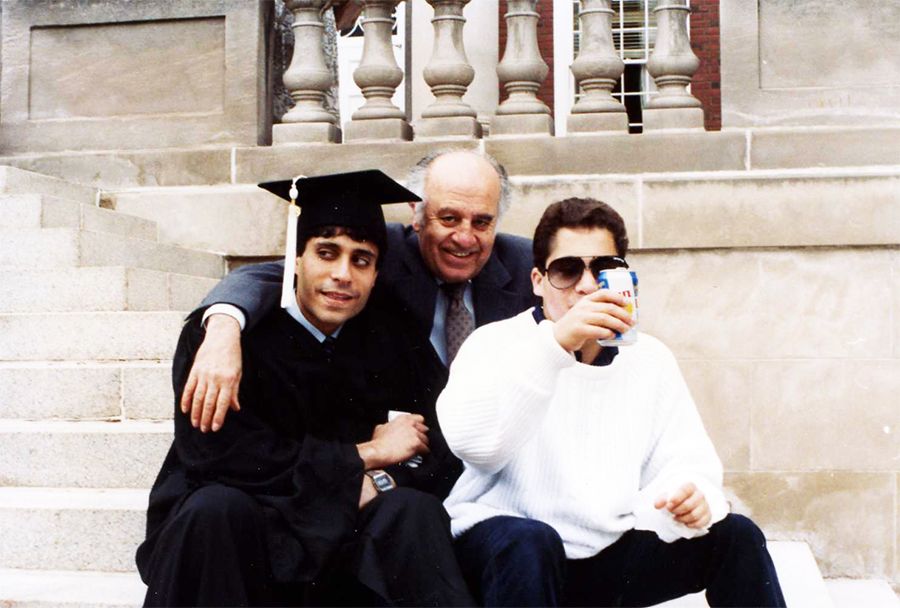
Anis Obeid and his sons Omar, left, and Kareem. After 50 years in America, he remains in touch with Lebanon and his Druze heritage.
Anis Obeid and his sons Omar, left, and Kareem. After 50 years in America, he remains in touch with Lebanon and his Druze heritage.
Born in 1934 and raised in the city of Aley, the second of Ibrahim and Salma Obeid’s six children, he, and his wife Nawal have lived in Syracuse, in New York state, for the past 52 years.
The first doctor in the Obeid family, he was educated at the National College in Aley, an institution known for its nondenominational character and civic values. The school, so important to generations of children, was damaged during Lebanon’s civil war, but later restored thanks to the efforts of the Druze community in the US.
Obeid believes that the closing of the faith to newcomers was a mistake, and certainly insupportable today, in an era when “the world is open ... there is no such thing as pure-blood Druze anymore. All families are hybrids.”
But, born and raised in, “a very traditional Druze family ... I am not giving up on my heritage. On the contrary, I am very proud of it, that’s why I wrote the book,” he added.
Something of a poet, he addressed the experience of the expatriate Druze in “Hybrid,” a poem he wrote in 2011.
Alongside his work for his adopted community in the US, similar to many Druze overseas his thoughts are never far from Lebanon – as a founder and past chair of the American Druze Foundation, and a member of the AUB Alumni Association, the American Task Force on Lebanon, and the Syracuse area Middle East Dialogue group.
There are many Druze families to be found in Lebanon whose sons and daughters have ventured out into the wider world, and fathers and mothers who, having travelled abroad to work for the sake of their families, have been drawn back to the land they love.
The Druze of the mountains possess a quiet passion for nature, a connection to the rhythms of seasons and harvests that chimes with the simple spirituality of their faith.
Walid Bou Ayash, 71, who grew up in a family of farmers tending the land around the Druze town of Baakline in Mount Lebanon, 45 kilometers southeast of Beirut, said: “In my day, there were no devices, no TV. The closest thing to you was the land, the trees, agriculture, harvests, and the observance of seasons.
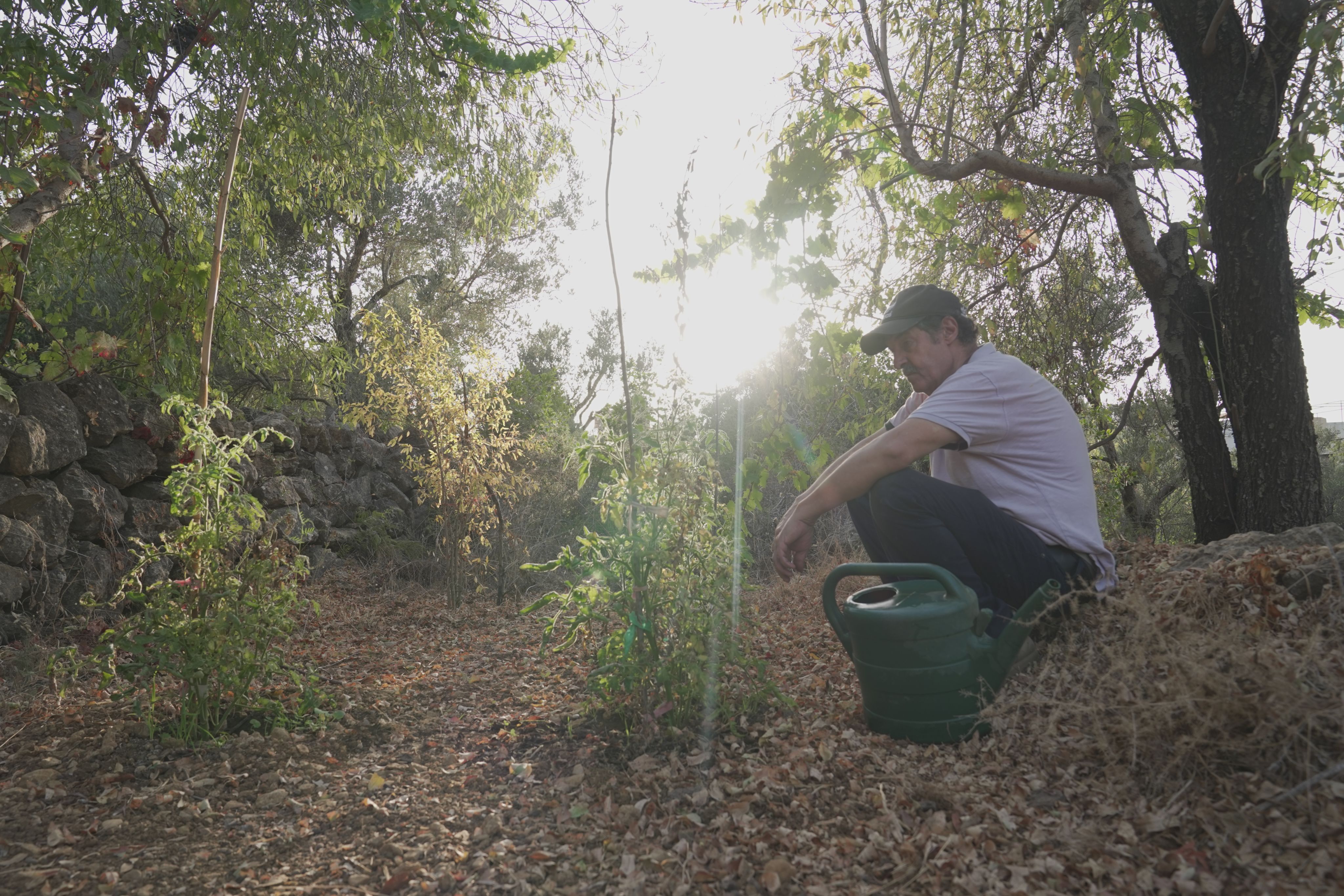
After 35 years working as an expatriate in Saudi Arabia, Walid Bou Ayash returned to farm the family land in Mount Lebanon.
After 35 years working as an expatriate in Saudi Arabia, Walid Bou Ayash returned to farm the family land in Mount Lebanon.
“This relationship, this connection and intimacy between man and his land, and man’s love for the land, was nurtured in me. It stayed with me as I grew up, and I found that man’s best friend, the best source of rest and comfort, is the land.”
He speaks poetically of a passion shared by all Druze who grew up with their past and future rooted in the soil of their homeland – a passion he passed on to his children, Rami, 40, who owns and manages a store in Halifax, Nova Scotia, 37-year-old Karem, an artist in Saudi Arabia, and Hadi, an actor.
But he knew that a love of the land alone would not be enough to prepare his children for life in a Lebanon that was changing.
“The most important mission in my life was to get them an education, and I struggled in foreign lands for them to have this, to put this weapon in their hands so they might have a future,” he added.
After Lebanon descended into civil war in 1975, he never finished his own studies and instead found work in Saudi Arabia, as a sales manager. He remained in the Kingdom for 35 years, travelling back and forth whenever he could to see his family.
He said: “The sense of responsibility toward my children is what kept me going. This was the only incentive I had. You have to rid yourself of selfishness for the sake of the humans that you were responsible for bringing here on Earth. This is very important.”
The family of Rabih Hamze, 44, is another product of the economic and social pressures that have shaped the Druze diaspora.
Hamze lives in London with his wife, Kathy, an Australian Druze, and their sons Samir, aged eight, and four-year-old Julian.
He was born in 1977 in Saudi Arabia, where his parents were living at the time, and first moved to England with them as an eight-year-old in 1985, when his father was offered a job in London.
The family stayed until 1990, “when my dad decided to take us back to the homeland after the war ended. We thought everything would be fine again in Lebanon.”
In the wake of the civil war, however, work was hard to find, so in 1991 his father returned to London. “He used to visit us back home every year, then in 1994 he and my mum decided we should all move back to the UK.”
The family has lived there ever since.
Similar to many Druze over the generations, events in the homeland ensured that building his own future was not a trouble-free affair.
He met Kathy when she was visiting Lebanon, and they embarked on a long-distance relationship between London and Australia.
Hamze said: “We were due to get engaged in 2006 but then the problems started happening between Israel and Lebanon.”
He was stuck in London and Kathy was in Lebanon. Eventually she got out to Cyprus and then back to Australia. Hamze followed, they got engaged in Australia, and finally married in 2008.
“Our story is one of war, love, and a distant relationship.” It is a description that could be applied to so many Druze relationships over the years.
Hamze now works in London as a systems manager for an e-commerce marketplace and his two sons were born in the UK. They all try to visit Lebanon every year – his father’s home village is Aabey in Mount Lebanon, and his mother is from nearby Baawerta – but nevertheless he worries about his children losing touch with their roots and culture.
In the small UK Druze population, there are no initiates to guide the community and, as Hamze knows from his own experience, “growing up here it is very hard to learn about the faith, without the knowledge of elders.”
He added: “My father used to take us to Druze activities to keep us in touch with the group and friends. I try to make more Druze friends with children of similar ages to mine, so that our children can bond and play together. I believe it will be more difficult when they are teenagers.
“Druze-to-Druze marriage is critical because it ensures that the number of Druze who aspire to maintain their faith and heritage does not decrease and that our religion does not perish.”
He fears, however, that the younger generation may think differently.
Hamze said: “The whole world and other cultures are now accessible through technology. And it is difficult for young Druze to believe in intermarriage because the faith is closed to them, and they know little about it but what their parents tell them and try to guide them to.”


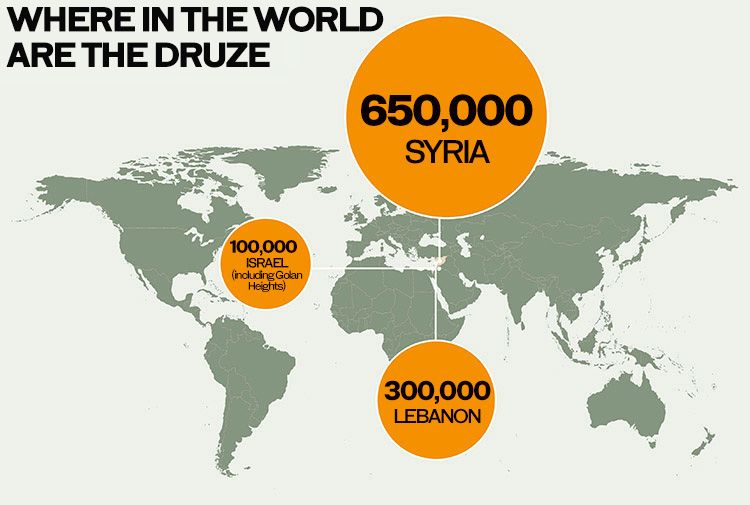


The Druze tomorrow

Abbas Halabi, a prominent Druze judge and author, believes it is time for the followers of the faith to reconsider the necessity of the blanket secrecy their forebears adopted as a result of the persecution of the past.
He said: “Maintaining the secrecy was an obsession among the Druze because of the circumstances they went through. However, circumstances have changed.
“The Druze should not remain captives of the political or religious moment that dictated them to maintain secrecy, and prevent the other, even the monotheist himself, to see the secrets of the faith.
“There have been many cases in history in which some Muslim and non-Muslim thinkers and writers and orientalists distorted Druze history or attacked their creed because they did not understand the core and the foundations of it.
“The curiosity of others about their origins necessitates, in my opinion, that they introduce themselves, because they should not leave this task for others to introduce and define them,” he added.
Halabi pointed out that this did not mean revealing “the essence of the faith,” which should continue to be guarded “out of respect for the principles of secrecy that they were directed to maintain.” However, he said: “They should take a different approach that lets others know how they live, what they think, what holidays they adhere to and what values they abide by.”
Such an approach, he noted, would be especially necessary in Lebanon.
“Since the end of the Lebanese civil war in 1990, I have noticed that there is ignorance on the part of many Lebanese about the reality of the Druze. They do not know what their clergy wears, nor do they know about the values they believe in, nor their way of living, nor their way of thinking, nor the occasions that bring them together.
“In diverse societies the basis of a peaceful civil life is knowledge of the other. If you appropriately present yourself, the other knows about you and respects your privacy, and that is true both here and abroad,” he added.
The Druze and their faith today face various threats, which differ from country to country. There are political and economic pressures in Lebanon, where the current crisis has driven some to leave the country, which Halabi said, “weakens the country and weakens the Druze and the mountain.”
In Palestine, he added, there was “a danger to them and their identity because the Zionists are tirelessly seeking to separate them from their Palestinian and Arab brothers.”
In Syria, he said the threats faced by the Druze were both economic and existential. “We should not forget, for example, the massacre that took place in Jabal Al-Summaq in the outskirts of Aleppo, where ISIS (Daesh) attacked the Druze villages, displaced their people, and imposed their extremist ideology.”
But he felt a different type of threat confronted the Druze in the diaspora. “There is the danger of losing not only their Arab identity but also religious identity. If a Lebanese Christian goes to one of these countries, he will find a church to turn to, and the Lebanese Muslim will find a mosque in which to practice his prayers.
“But as for the Druze, they do not have religious centers in these countries, or even a representative of the sheikhdom of mind to manage their affairs in personal cases, such as marriage, divorce, death, prayer for the dead, and the registration of children. All these things are unavailable,” Halabi added.
Abu Shakra pointed out that the secrecy within the faith itself posed a threat in the modern world.
He said: “It is a closed faith, closed even to the Druze themselves ... even those who claim to know, don’t know. So, when a Druze grows up at home, he or she suffers from the disadvantage of, one, having his parents almost illiterate about the faith, and secondly, there are no sophisticated religious educational institutions.
“As a result, the younger generation is predominantly secular, especially the ones who have left Lebanon and are living abroad. The Druze have a very high percentage of educated young men and women and most of these people not only don’t know much (about the faith), but I don’t think they recognize it as a priority.”
He feared that in the future there may be “more threats than opportunities,” chief among which would be “the numerical problem.”
He added: “The Druze community does not grow fast. There is no polygamy in the Druze faith, so the size of a Druze family is not that big, and the growth rate is very slow.”
He noted that being a minority group living in “a very uncertain region” posed another threat.
“I don’t believe that the Druze feel safe anywhere now, especially in Syria. It’s ironic that perhaps in northern Palestine, in Galilee, they feel much safer than in Syria, which has the largest Druze population in the world.”
Abu Shakra said that in Lebanon, “the demographic situation is changing very fast. Emigration is taking its toll on the Druze community, which is small to begin with, and on other communities. I believe that the Druze and the Christians of Lebanon face a very uncertain future.” He added that ultimately, the opening up of the faith was inevitable.
“Many of the uqqal realize there is technology, that you have to open up, that there are no secrets left in the world,” he said.
For a faith that has been closed for 1,000 years, such a process must be handled cautiously, but the reality was that eventually “all faiths develop and change. This is the nature of things, and this is going to happen sooner or later to the Druze,” Abu Shakra added.
Credits
Writers: Ephrem Kossaify, Jonathan Gornall
Researcher: Leen Fouad
Editors: Tarek Ali Ahmad, Mo Gannon
Creative director: Simon Khalil
Designer: Omar Nashashibi
Graphics: Douglas Okasaki
Video producer: Hasenin Fadhel
Picture researcher: Sheila Mayo
Copy editor: Michael Haworth
Translation: Charbel Merhi, Joy Geryes, Rima Barakat, Joelle Sleiman, Mohammed Kheir and Cynthia Milan
Social media: Jad Bitar, Daniel Fountain
Producer: Arkan Aladnani
Editor-in-Chief: Faisal J. Abbas
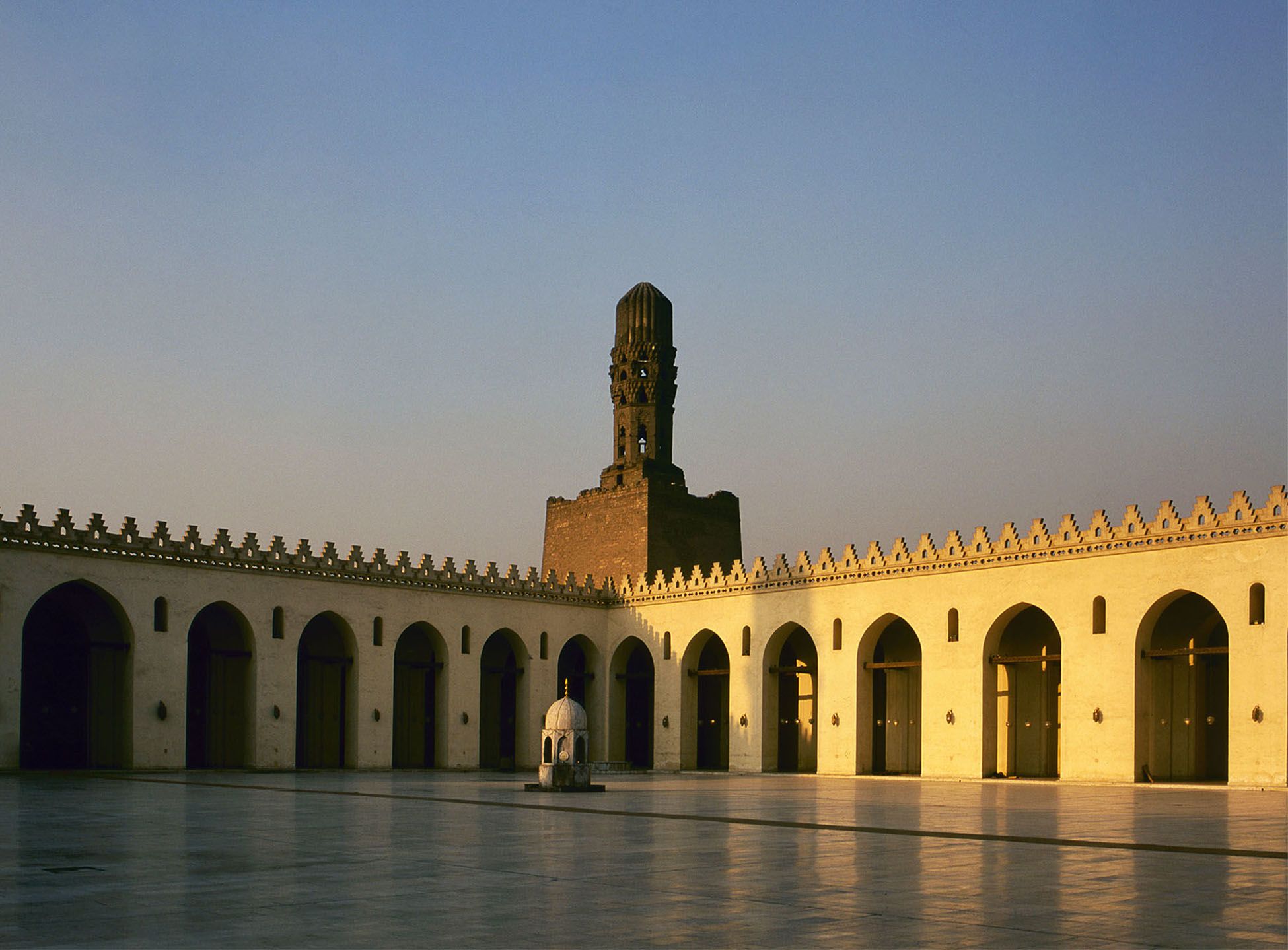
More Arab News Minority Reports



